Gardening is a quiet practice | Huaye·2019 Good Garden Competition Planting Category Outstanding Works
search
The true meaning of a good garden
Garden Competition
Every flower and weed has its value, and planting life will allow us to extend this concept to ourselves: everyone has his or her own value of existence.
As Jiayu says, planting is both a way to calm down and a way to heal. Whether you plant just a few plants or simply dream up a garden, during this quiet time spent cultivating with plants and flowers, we'll fall in love with more and more natural life, and we'll find greater peace and composure.
Spring, summer, autumn, and winter—as the seasons change, we plant flowers, fruits, and vegetables in season, harvesting the fruits of spring and autumn. This is a slow process that requires immense patience, and with patience comes perseverance. It's so slow, so slow that even gardeners don't realize when they've finally overcome their own anxiety, confusion, and sadness.
We know that
The birth of a good garden,
It takes not only time to settle,
It also requires the participation of family, pets, creativity...
Competition Introduction
Have you noticed that in recent years, our consumption levels have been constantly upgrading, and so has our pursuit of beauty. Turning courtyards, terraces, and balconies into gardens, and even pursuing larger and more beautiful private gardens, has become a growing trend, and with it, a wealth of gardening delicacies and creative ideas have emerged.
As Huaye celebrates its 5th anniversary, the garden stories we have collected have become a huge force. It is time to give designers and lifestyle experts a platform to showcase their talents!
Therefore, Huaye launched the "2019 Huaye Beautiful Garden Competition." Since its launch, we have received garden entries from hundreds of contestants. Their gardening experiences not only reflect fantastic ideas, but also the lessons learned through hard work and the joy of harvest...
Today we have selected 7 garden owners’ planting stories to share with you. If “a good garden is a belief”, they are the most loyal believers.
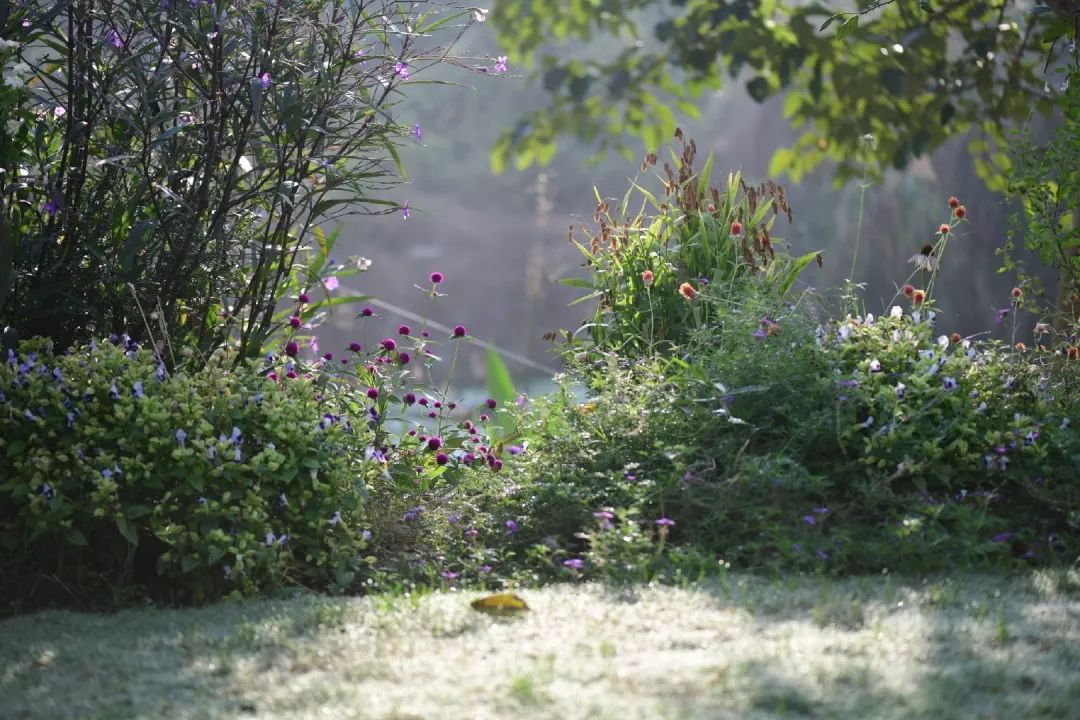
Excellent works of planting in Good Garden Competition /

-Jiayu Garden-
Planting is not only a way to settle down, but also a way to heal.
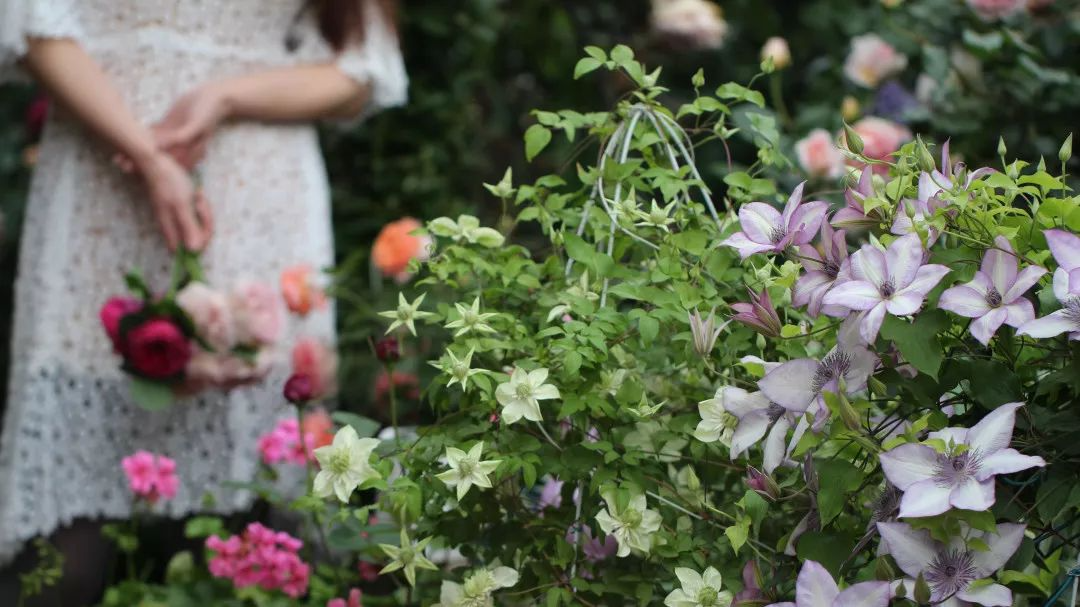
Initially, I envied the vibrant roses on the park walls in spring, so I wanted to plant a climbing rose to adorn my terrace fence. However, when spring arrived, the rose I found on Taobao didn't bloom as spectacularly as the promotional photos suggested. In fact, it wasn't the climbing rose I'd hoped for; it only produced a few ordinary, even gaudy, bright red flowers.
However, it was precisely because of this fake Suqian rose that, when I was searching Baidu with disappointment and resentment, I accidentally came across Longsha Gem and discovered the Moshanghua Forum.

▲The owner's words of praise
From then on, I opened the magical door to gardening, and my own colorful world of gardening. On my terrace, which is less than 30 square meters, I started from the first design, brick by brick, soil by soil, flower by flower, and tree by tree. Eight years have passed, and I am obsessed with it and cannot extricate myself...
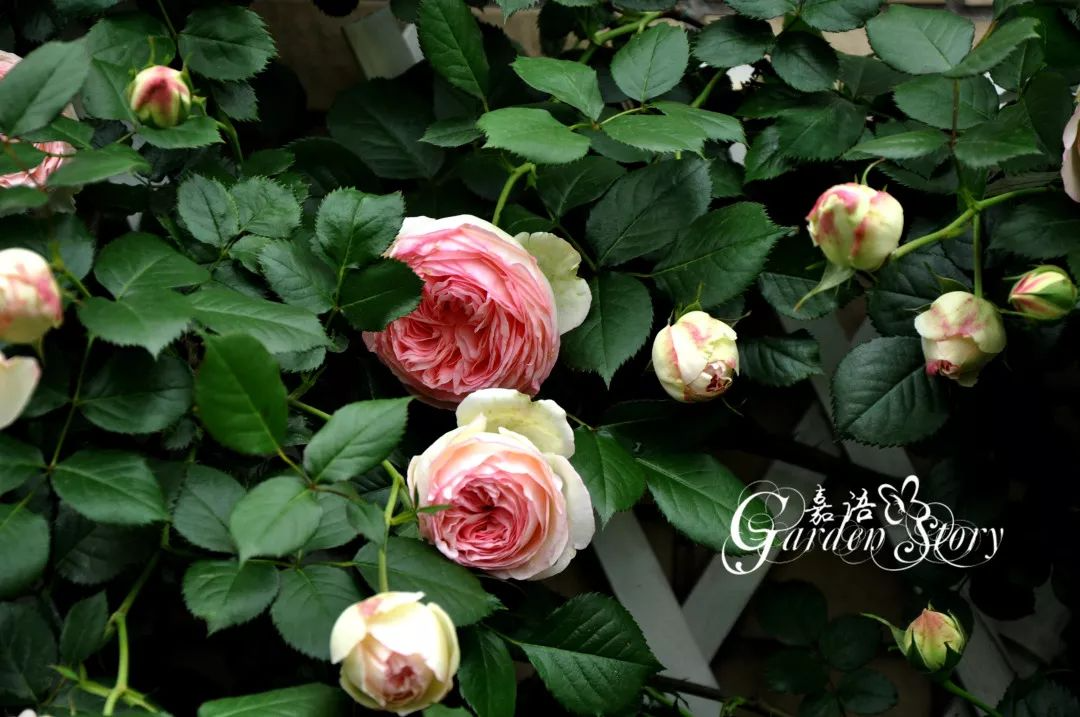
With a garden, life becomes poetic and picturesque. For me, a garden is a place of relaxation, a place of tranquility, and even more so, a place of healing. It's my own private world, where I can plant flowers and plants or just relax in my free time.
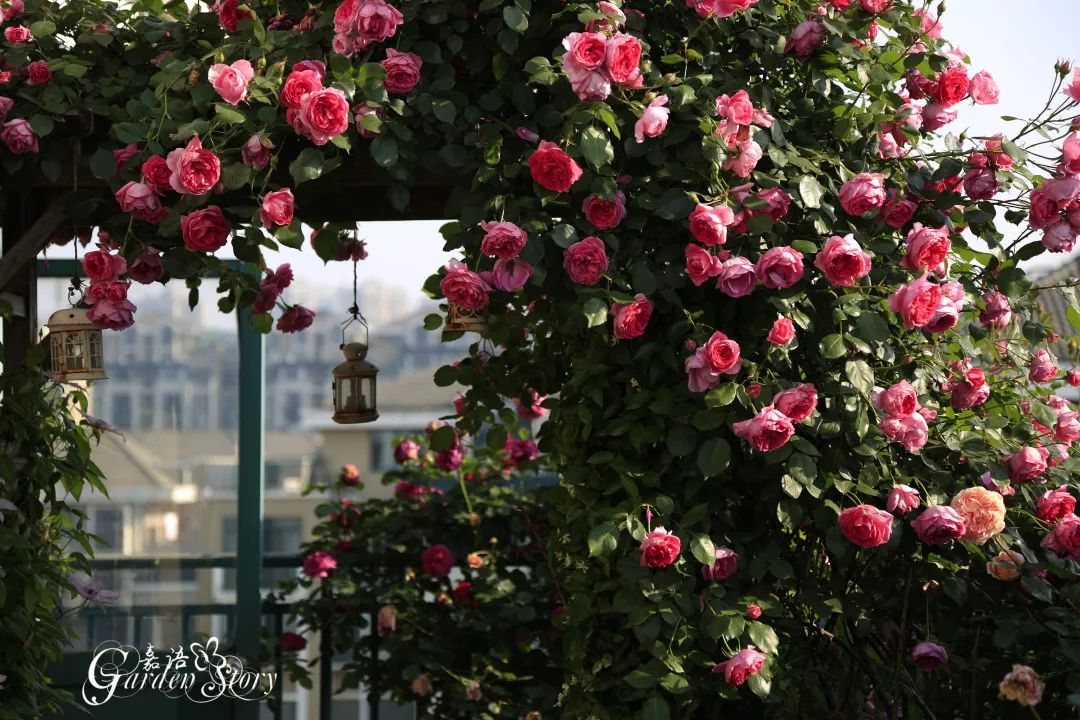
Every morning, I listen to the birdsong, breathe in the fragrance of flowers, and photograph while watering the plants. A gentle breeze whips through my hair, waterdrops wet my feet, the rising sun, dewdrops, birdsong, flowers... these fragments combine to create a world of beauty. A few daffodils, their nodding whispers, possess a certain elegance. The clematis, with its gracefully curved branches topped with furry buds, even before opening, exude a unique beauty.
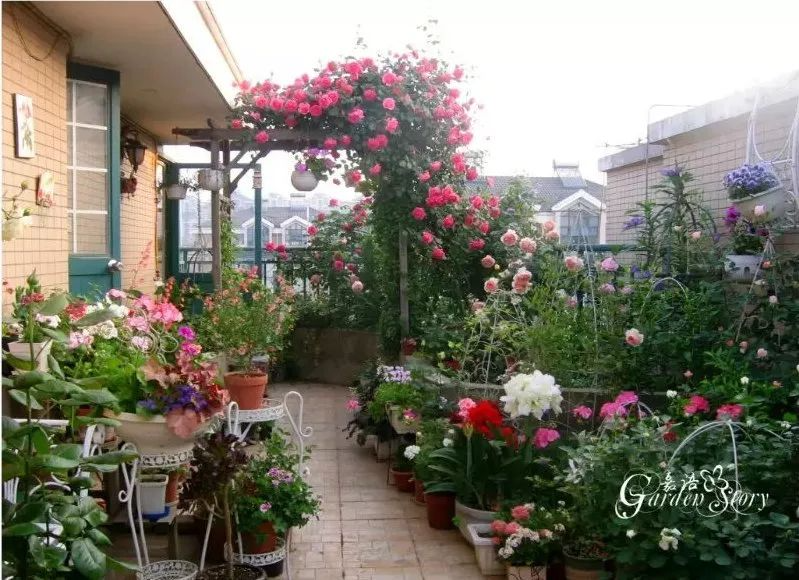
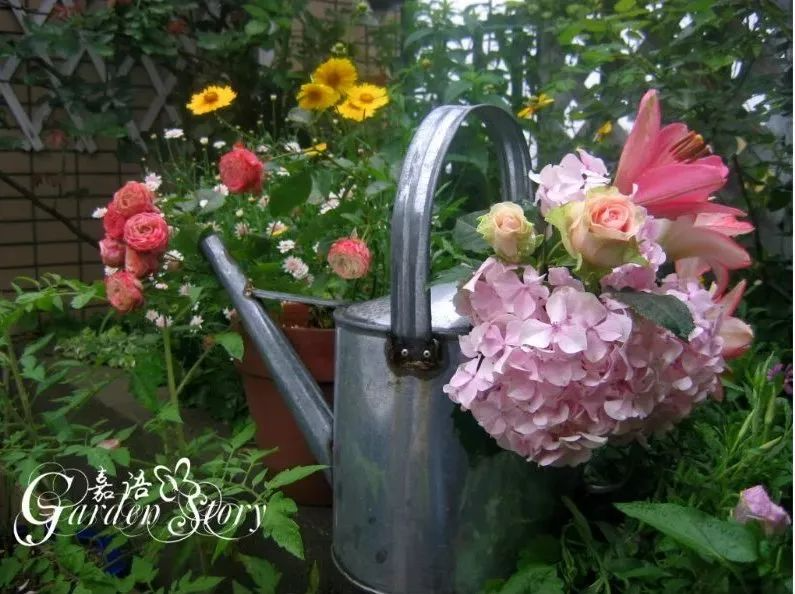
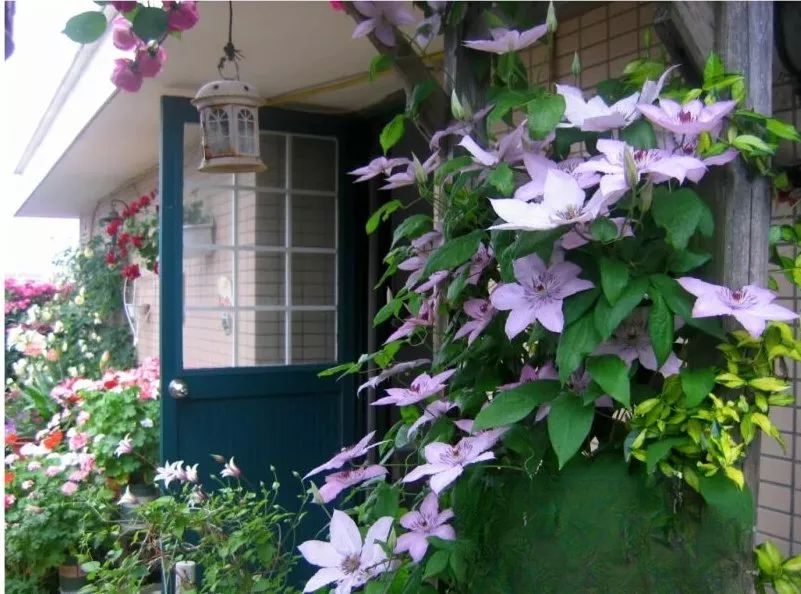
The fluffy, fleshy leaves of the Stachys lancifolia have a unique texture, and every time I see them, I can't help but want to reach out and touch them. The delicate rose flowers lean against the flower stand, looking so gentle, well-behaved, and lazy.
The slender coreopsis, its lovely little yellow flowers swaying in the breeze. The petunias are no slouch either, their tiny purple and red blossoms dotting the greenery.
Yes, this is my garden. Wherever I look, I freeze it into a beautiful picture. On a sunny day, there are red flowers, green grass, fluttering skirts and warm smiles. On a rainy day, there is also the artistic conception of a rainy day.
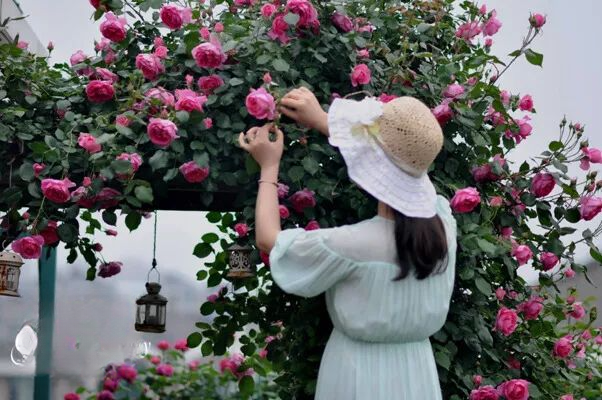
I saw a quote yesterday: "Women who can plant flowers are blessed!" Thinking about it, it struck me deeply. Looking back over the years, it's nothing but flowers blooming and falling, year after year, and in the end, all I gain is joy and a sense of leisure.
These are all spiritual enjoyments after all, not worth eating. However, my family allows me to spend so much time, energy and money to buy and plant flowers, and allows me to fill all available spaces in the home, such as the terrace, balcony, and windowsills, with flowers.
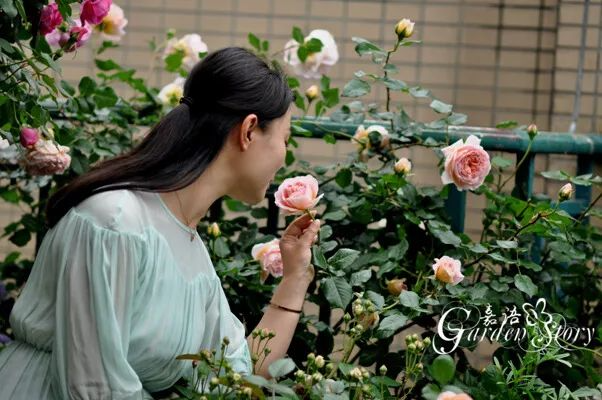
Just for my little hobby, this support is really rare and I am very grateful!
Although I still don’t have a big yard, a good camera, or the flower shop I long for, I have love, encouragement, and dreams. When I think of these, I feel very warmed, because all of these are precious things that cannot be bought with money.

- Lingzhi Garden -
Planting is a quiet practice
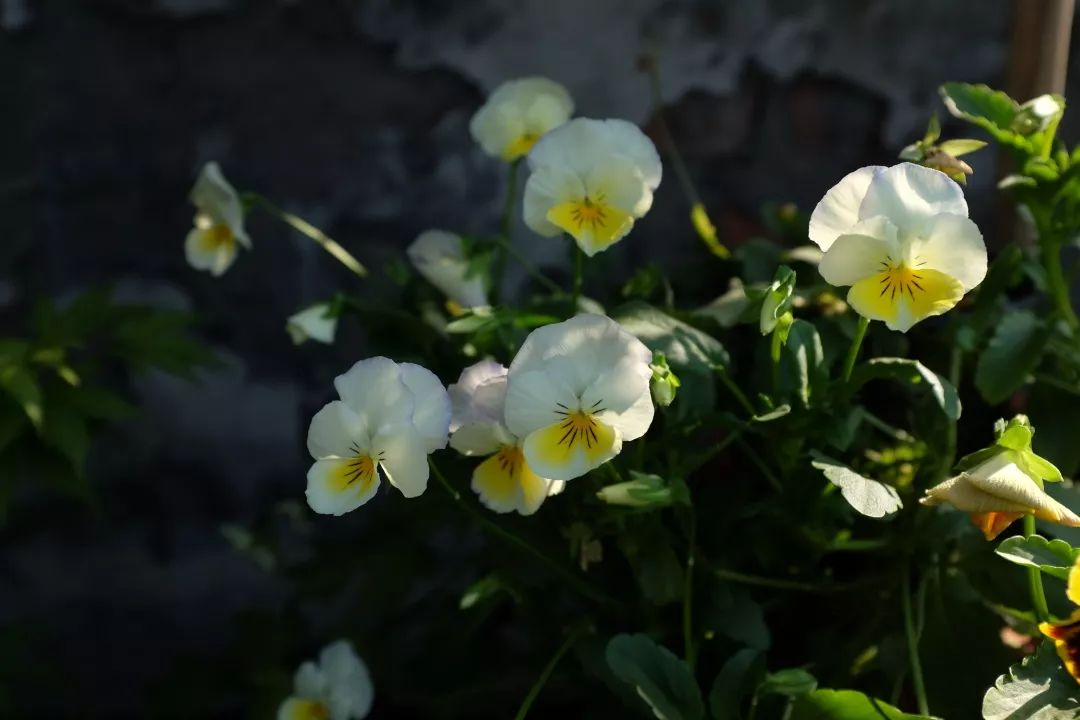
In March 2016, after consulting with the building's property management and obtaining their approval, I began planting roses on a small scale on the roof of my office. In September of the same year, I also added clematis, hydrangeas, and other flowering plants. Over the past three years, I've accumulated some experience in planting plants suitable for the Chongqing area.
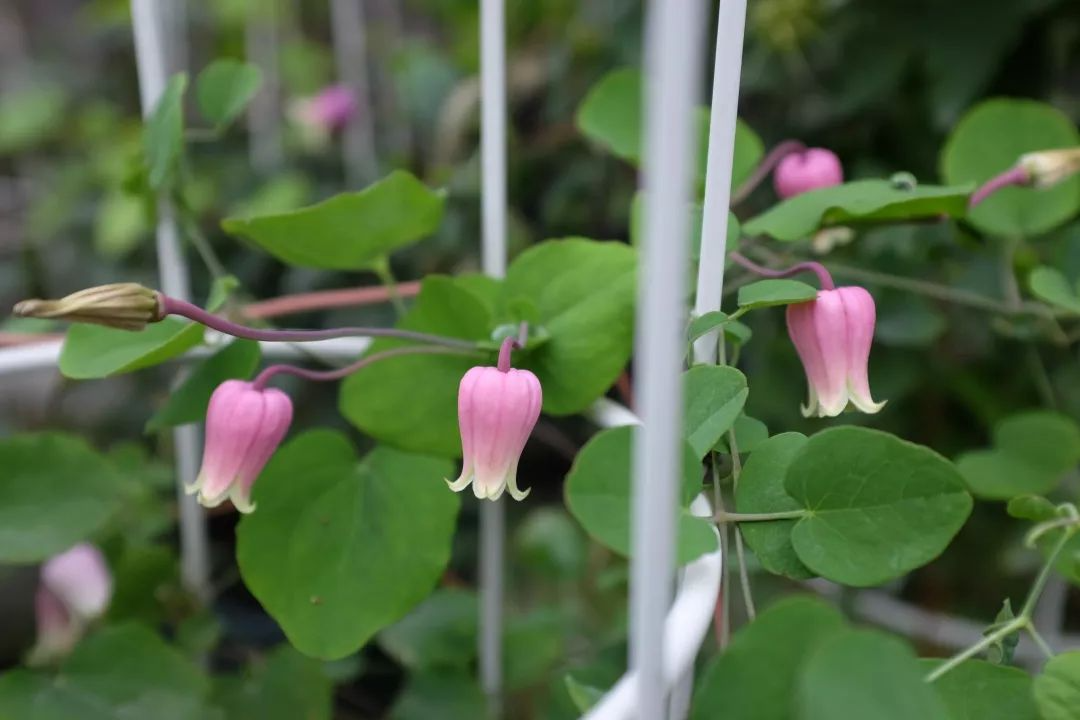
Planting Experience of Clematis, Rose and Hydrangea in Chongqing's Main Urban Area

Clematis
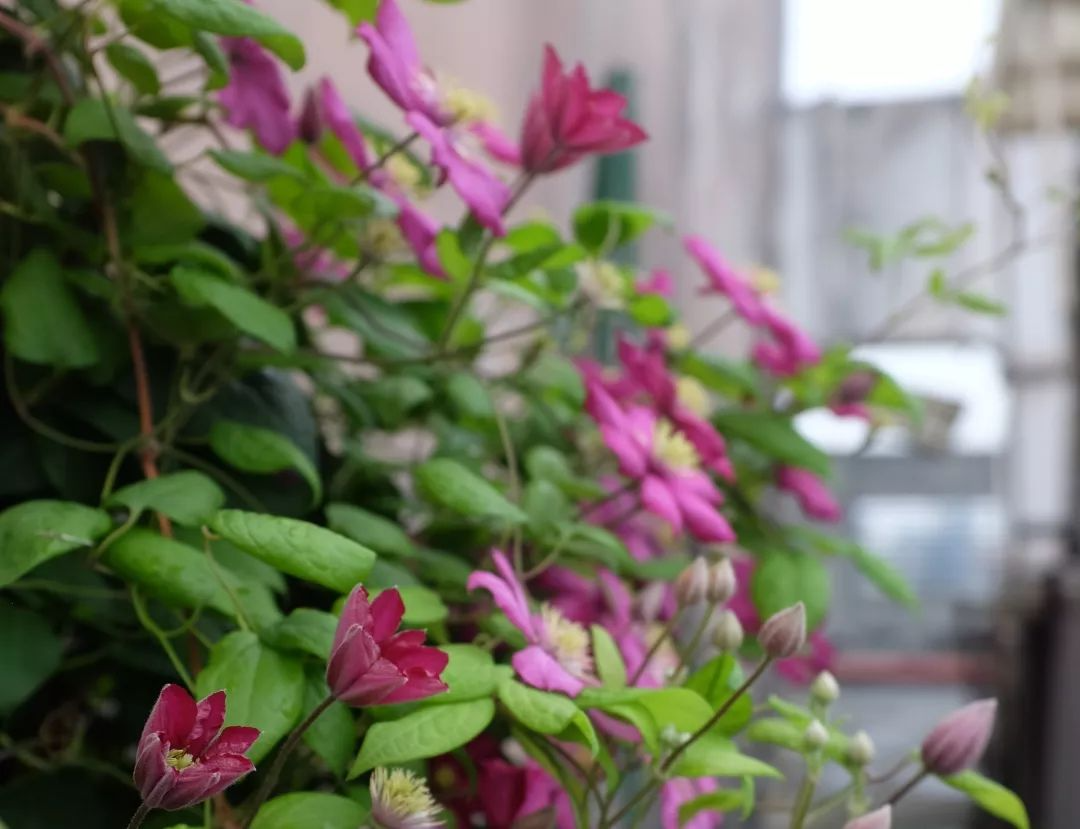
Category 3, Category F (need to avoid rain during the rainy season), Avenue, Texas and some categories (Silver Coin and Avalanche) can adapt to the high temperature and high humidity climate conditions in Chongqing's main city. They have good planting effects under full sunlight on the roof and have large flower volumes. They are strong varieties.
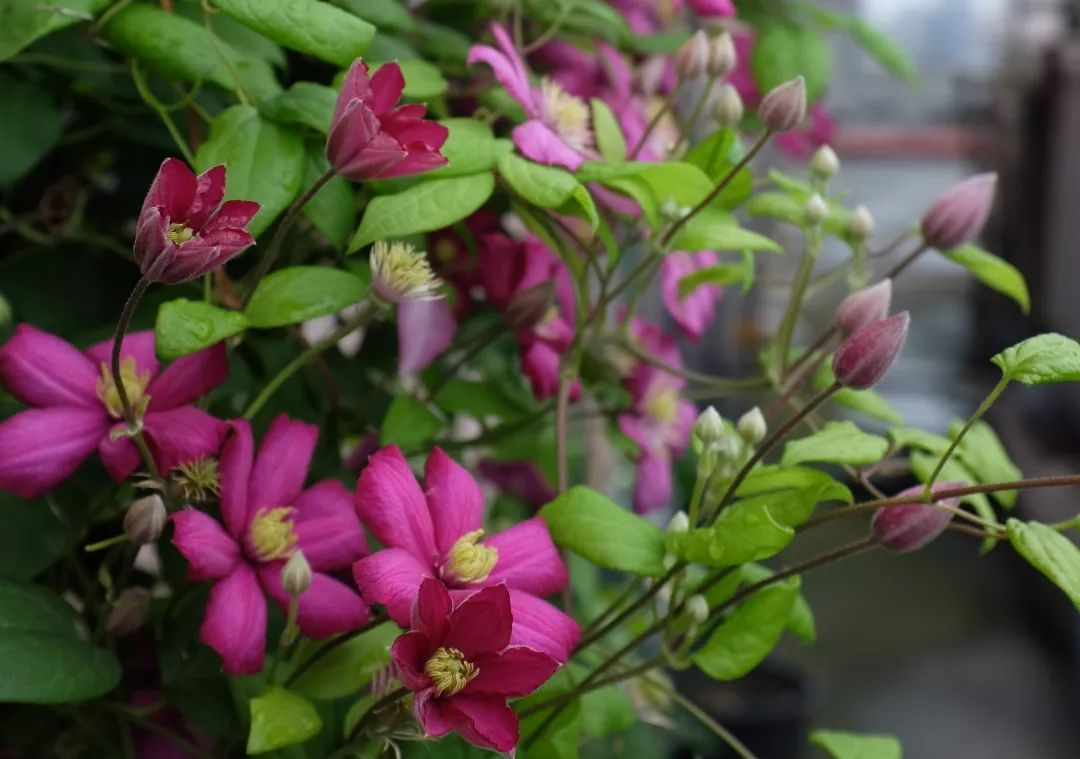
After flowering, remove any remaining flowers and apply a little slow-release fertilizer. Prune again at the end of July to enjoy another bloom. Prune again at the end of January the following year and apply a slow-release fertilizer to prepare for spring flowering. The above varieties are considered heavy pruning, while Dadao can be pruned heavily or lightly, depending on the seedling's condition. For slow-release fertilizers, use 318S and Magic Fertilizer; refer to the instructions for dosage.
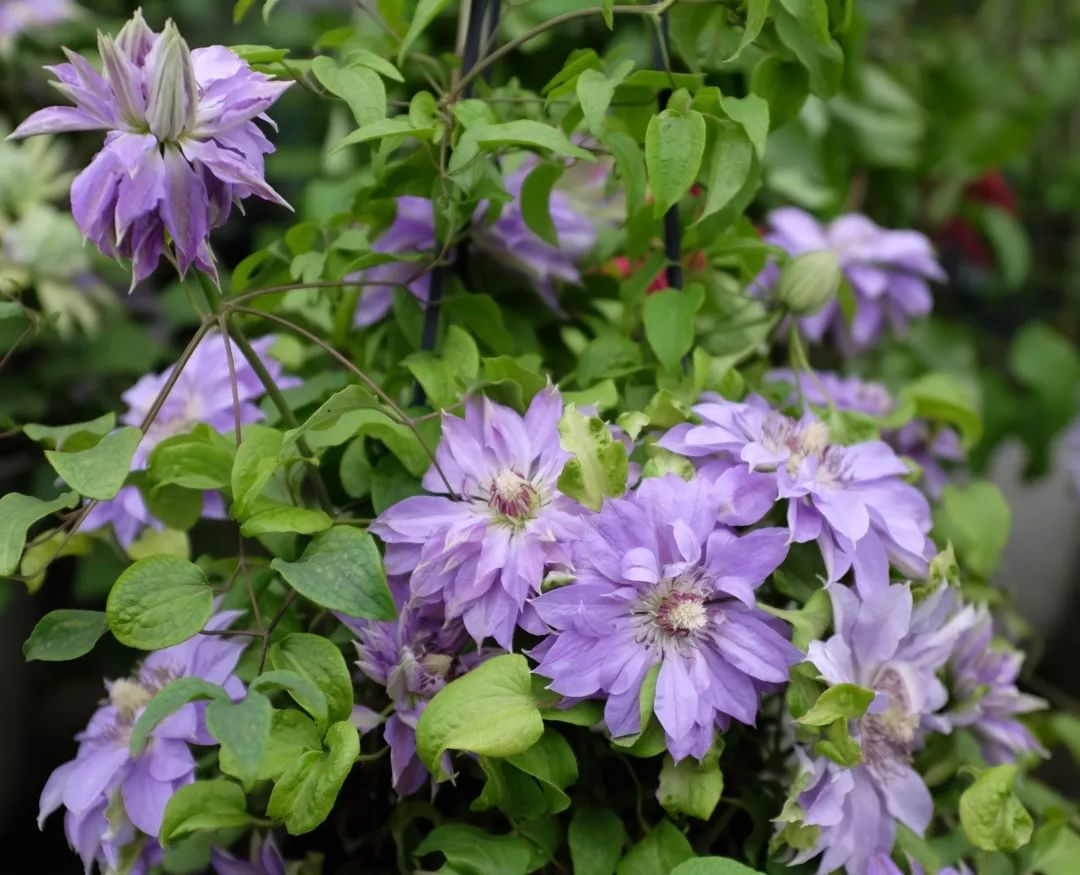
Types 1 and 2 belong to the light pruning type. They are relatively difficult to plant in Chongqing. During the rainy season, if possible, try to avoid the rain. The pruning time and fertilizer use are the same as above.
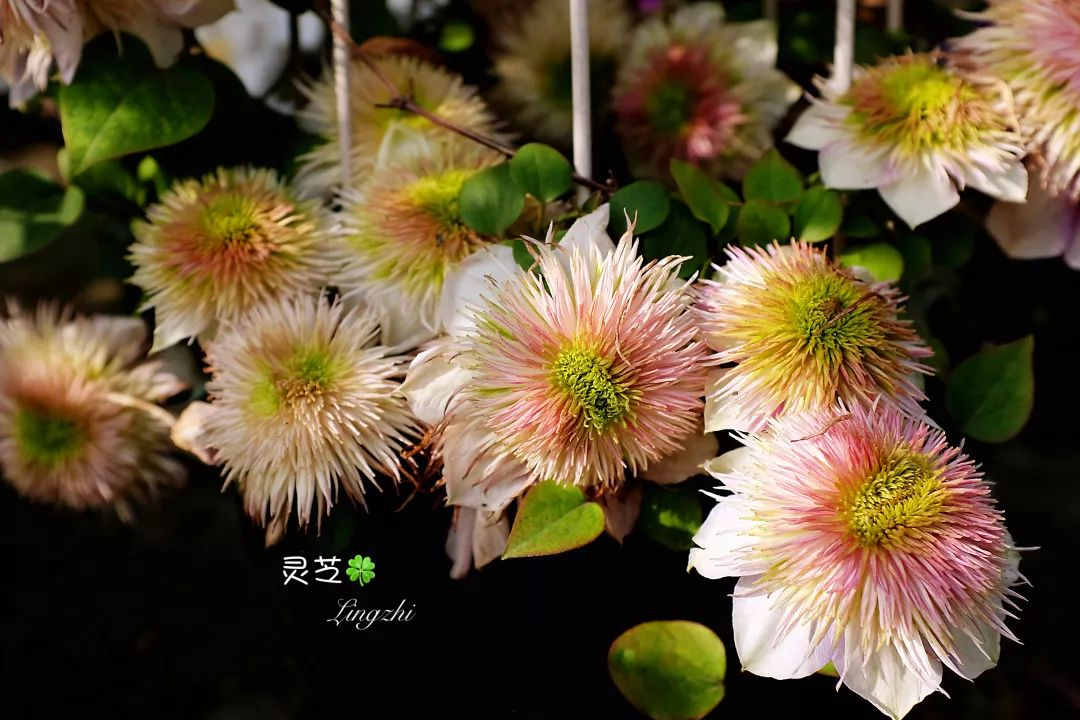

Chinese rose
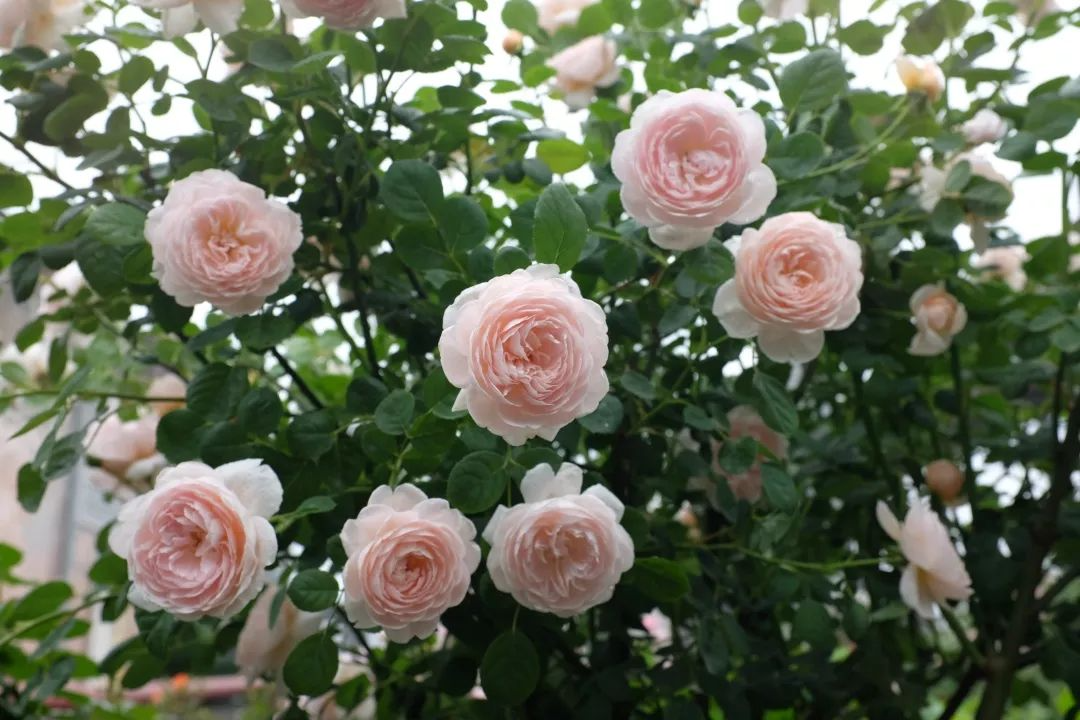
Most roses have better planting effects in Chongqing. Pruning and shaping begin around the Spring Festival every year. After the new buds sprout, water them with Huaduoduo No. 22 liquid fertilizer once a week. They start to bloom in early April, and no fertilizer is applied during the flowering period.
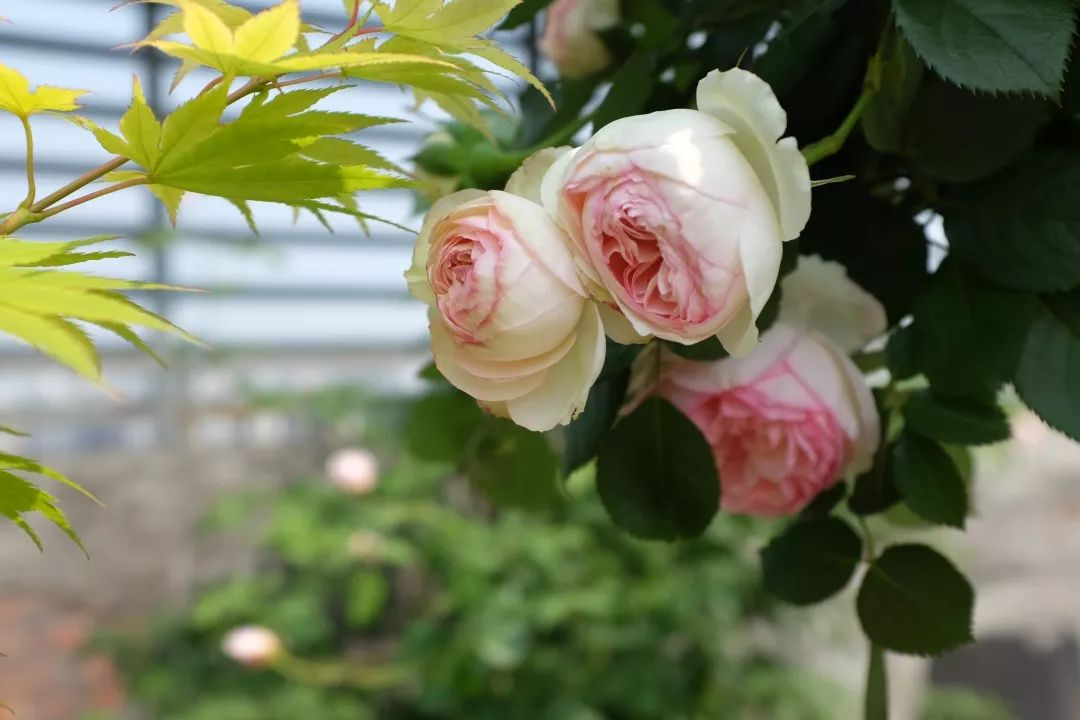
After the flowering period, prune the remaining flowers. As the temperature begins to rise, apply liquid fertilizer every ten days or half a month. Usually, the roses will bloom again after a month. Some varieties of roses can bloom until December.
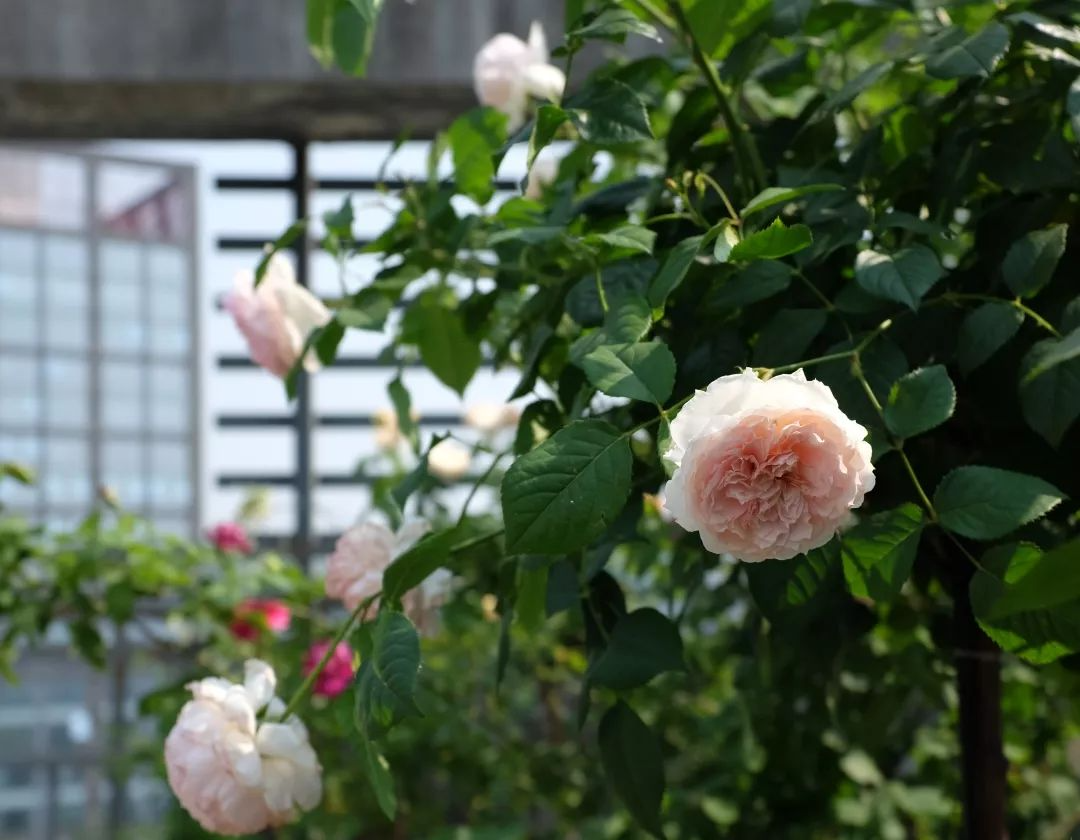
Every year after the winter solstice, we begin burying winter fertilizer. We dig about ten centimeters deep around the edge of the pot and bury well-rotted chicken manure and bone meal. Then, we water the roses normally and wait for the next flowering season. Prevention is key to rose pests and diseases, and the well-ventilated rooftop environment, which provides full sunlight, reduces their potential for pests and diseases.
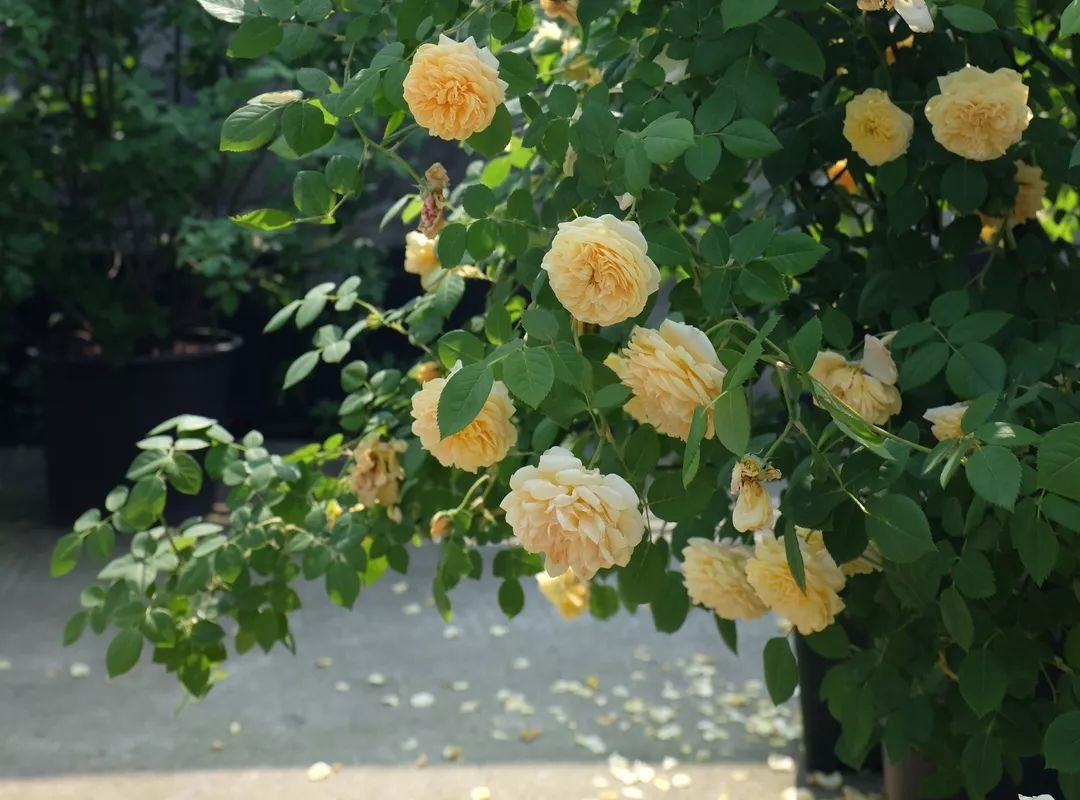
Preventive spraying is done once every year after winter pruning, with the main drugs used being avermectin, tribeclostrobin, oxathiapiprolin, and Bacillus thuringiensis.
Rose pruning is mainly divided into micro roses, shrubs and climbing roses. Micro roses and shrubs can be reshaped, or you can prune them according to your own preferences. Climbing roses only need to prune away dead flowers and old branches that have lost vitality for more than three years.
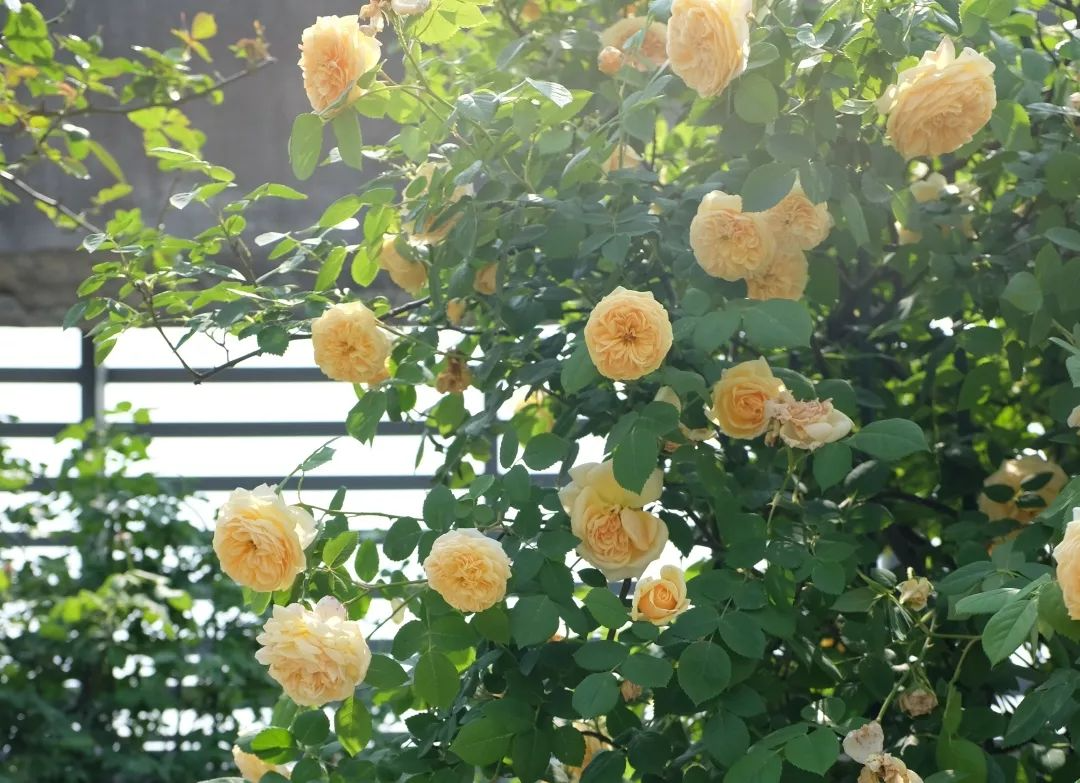

Hydrangea
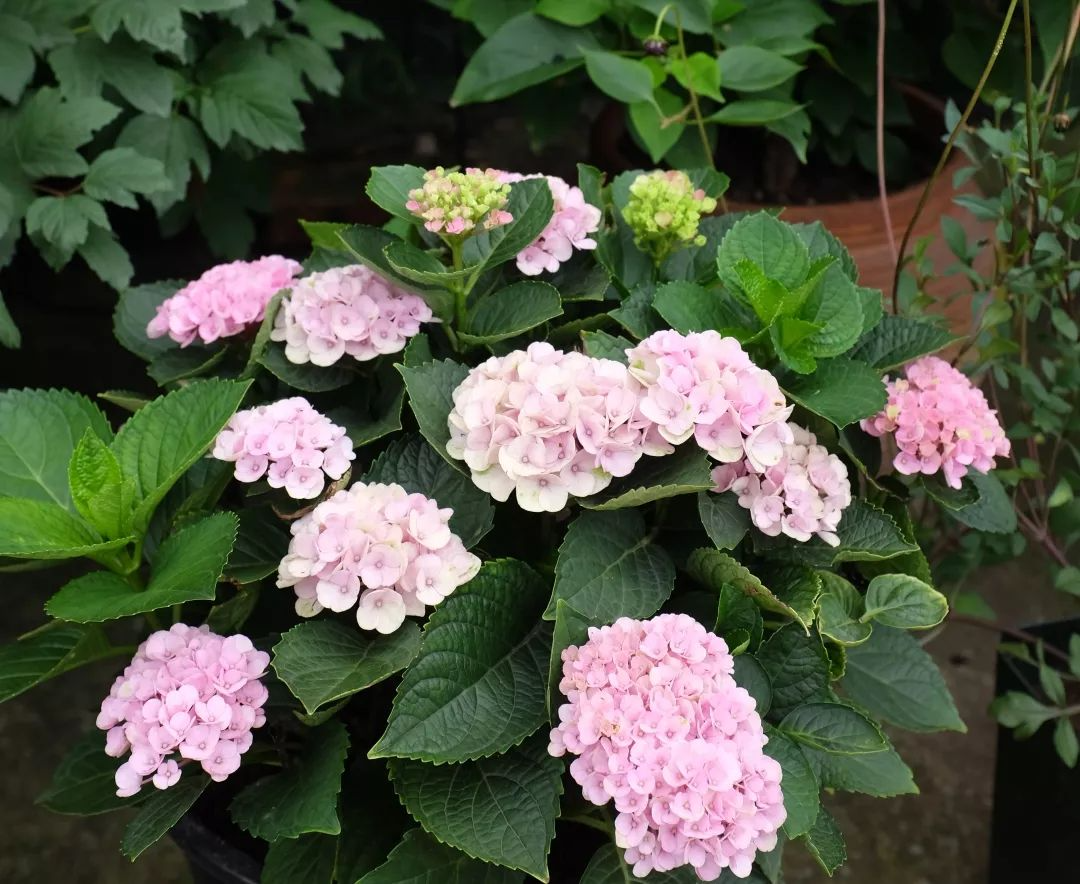
Hydrangeas are relatively easy to grow in Chongqing's urban area. They are pest-free and require only adequate fertilizer and water. They are at their most beautiful in spring, from budding to flowering.
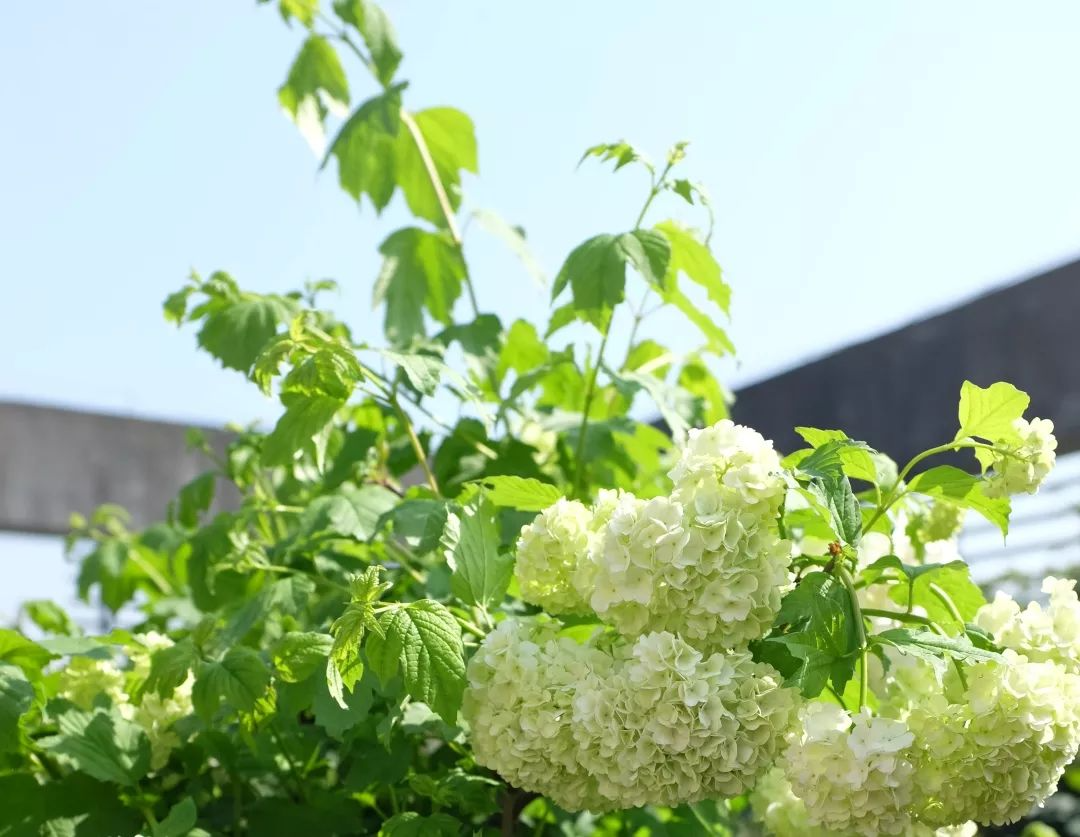
Since the roof is in full sun, but hydrangeas are not resistant to the sun, based on the temperature conditions in Chongqing's main urban area, I usually move them to a place where they are only exposed to the sun in the morning around the Dragon Boat Festival, and then move them back to a place with full sun after the Mid-Autumn Festival every year to prevent them from being sunburned.
During the hottest months of July and August, water the hydrangeas twice a day, morning and evening. Since most hydrangeas bloom on older branches, pruning and fertilizing at the right time is key.
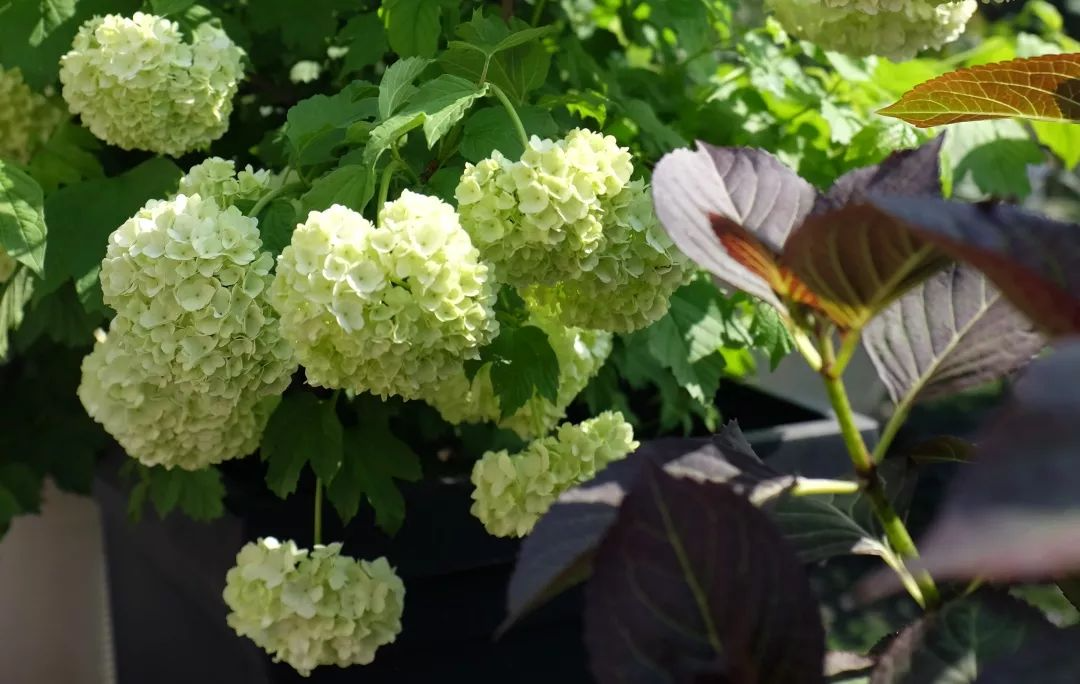
Hydrangeas should be pruned before August each year. Pruning after August will affect their bloom the following year. I usually leave older, heavily wooded branches to support other flowering branches. After the winter solstice, apply winter fertilizer, primarily well-rotted chicken manure and bone meal. If conditions permit, you can also apply some Magic Fertilizer or Iris Granular Fertilizer.
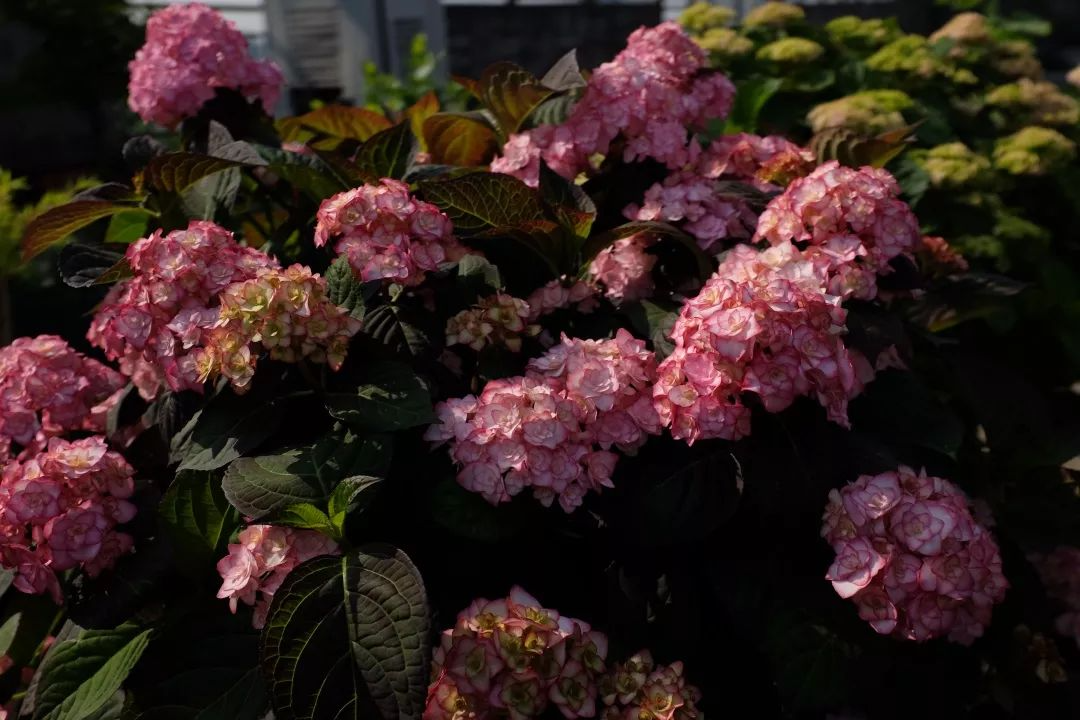
After budding in the spring of the second year, apply Huaduoduo No. 2 liquid fertilizer once a week. Stop fertilizing during the flowering period. Apply 318S slow-release fertilizer after flowering. Refer to the instructions for dosage.
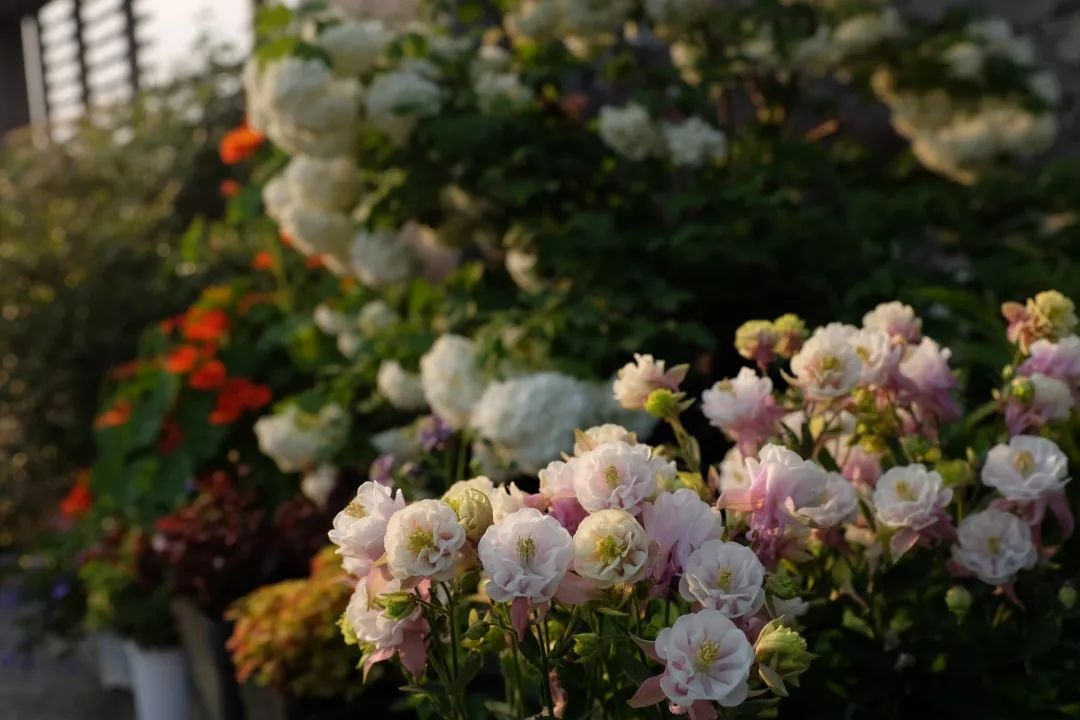
For me, planting is a spiritual practice. The healthy, tranquil, and beautiful flowers, plants, and trees are captivating, and they all touch my heart. "Sitting quietly with nothing to do, one day feels like two. If you live seventy years, you'll feel like a hundred and forty."
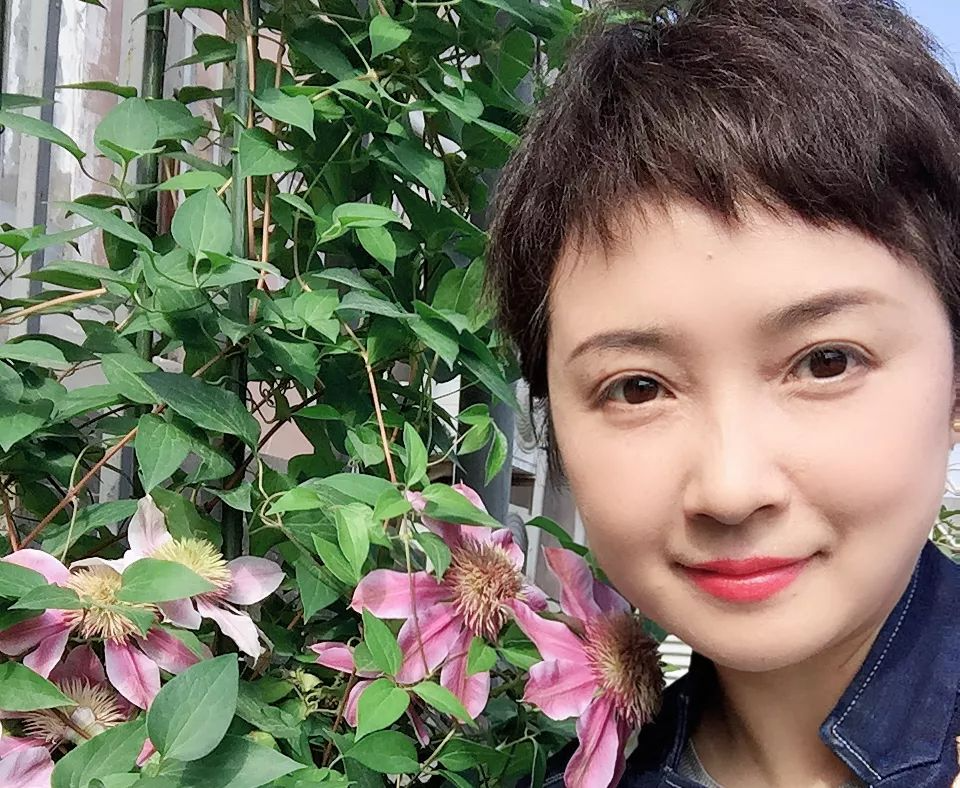
▲Ganoderma lucidum of the garden owner

- Shifang Garden -
This garden is a "random thought"
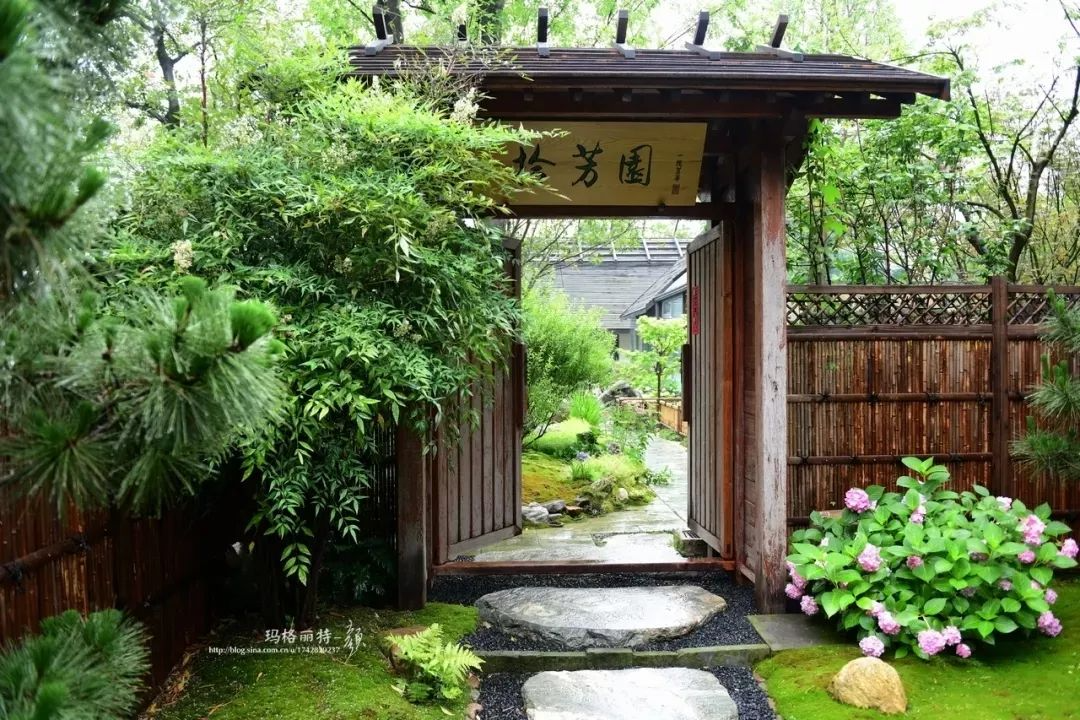
A garden is never created overnight; more details and care will gradually mature as time goes by in the garden.
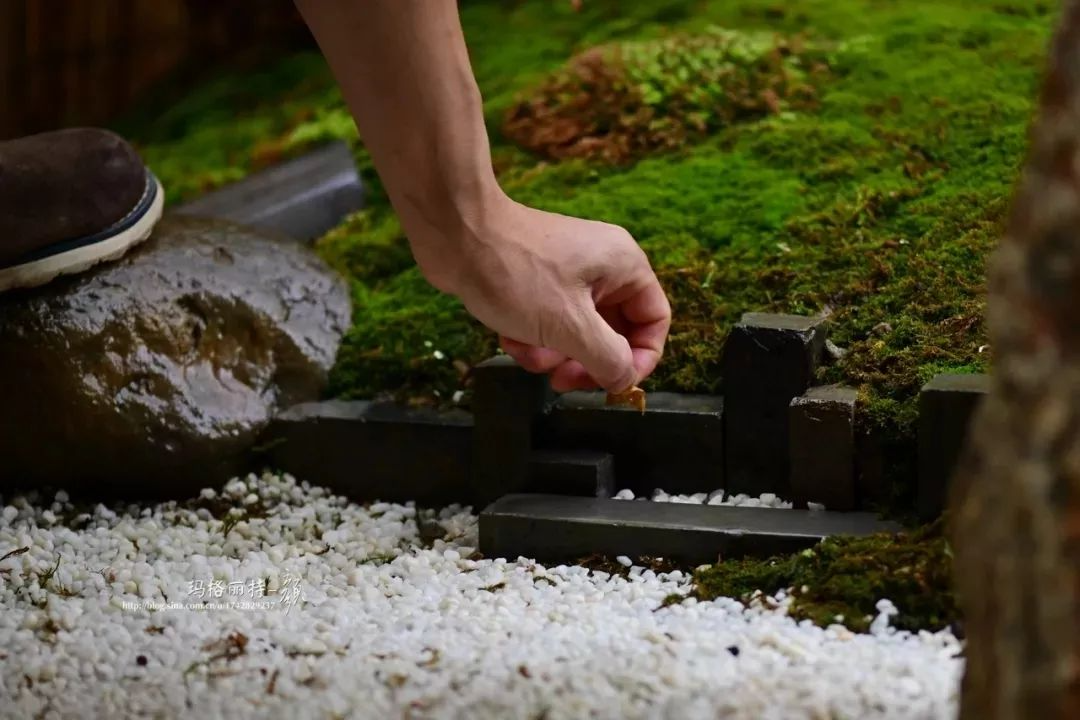
I watched Shifang Garden from its initial planning to its construction, and then its landscape was slowly polished and modified until it became what it is today.
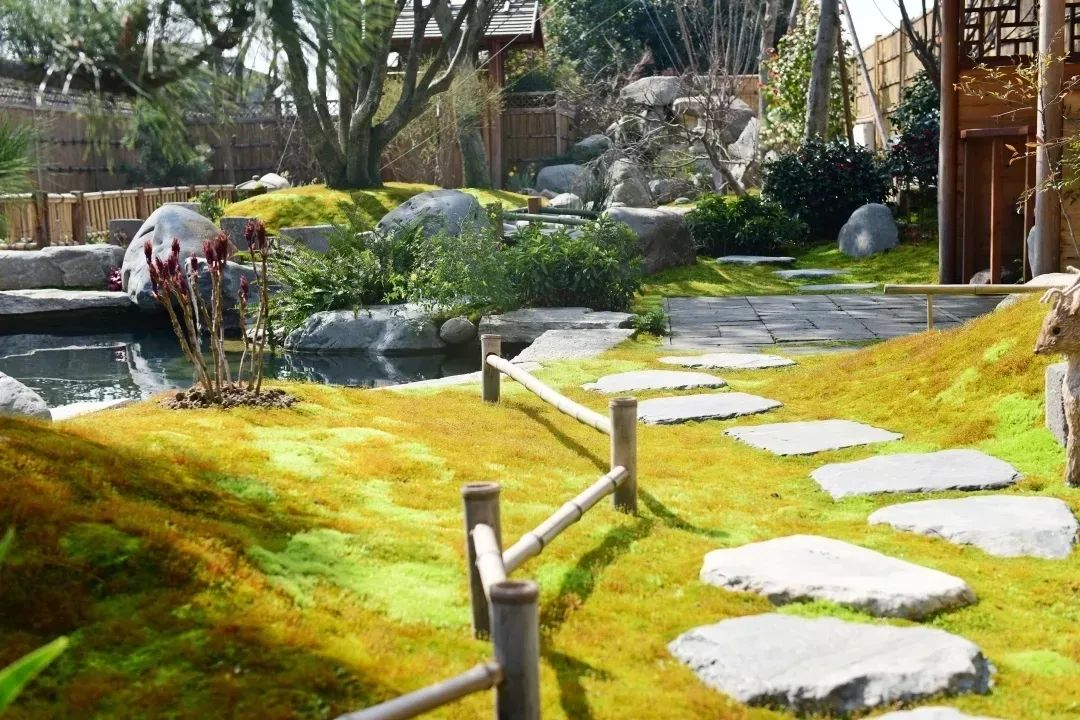
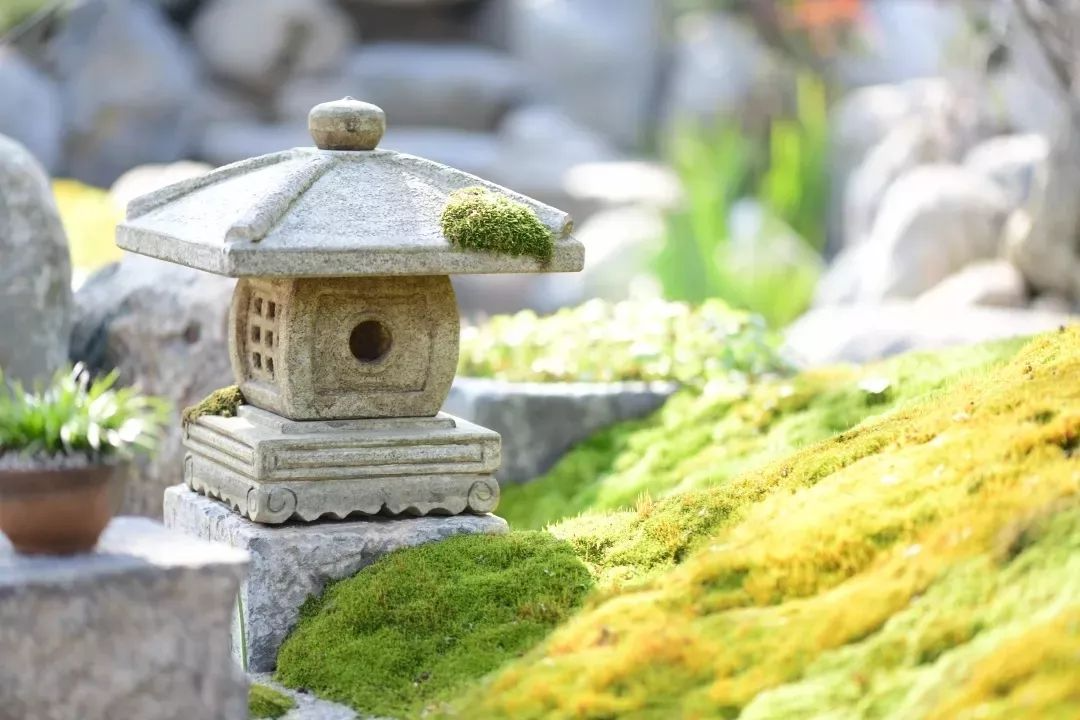
For example, there was no wooden platform designed outside the hanging flower hall. Because of the two old elm trees by the river, a wooden platform was added with a sliding door to the river bank. Surrounded by green shade, this place is particularly quiet. In spring, watching the tender leaves slowly emerge from the elm trees, the sunlight shining through the treetops, and the warm breeze blowing while making tea is my favorite place to stay.
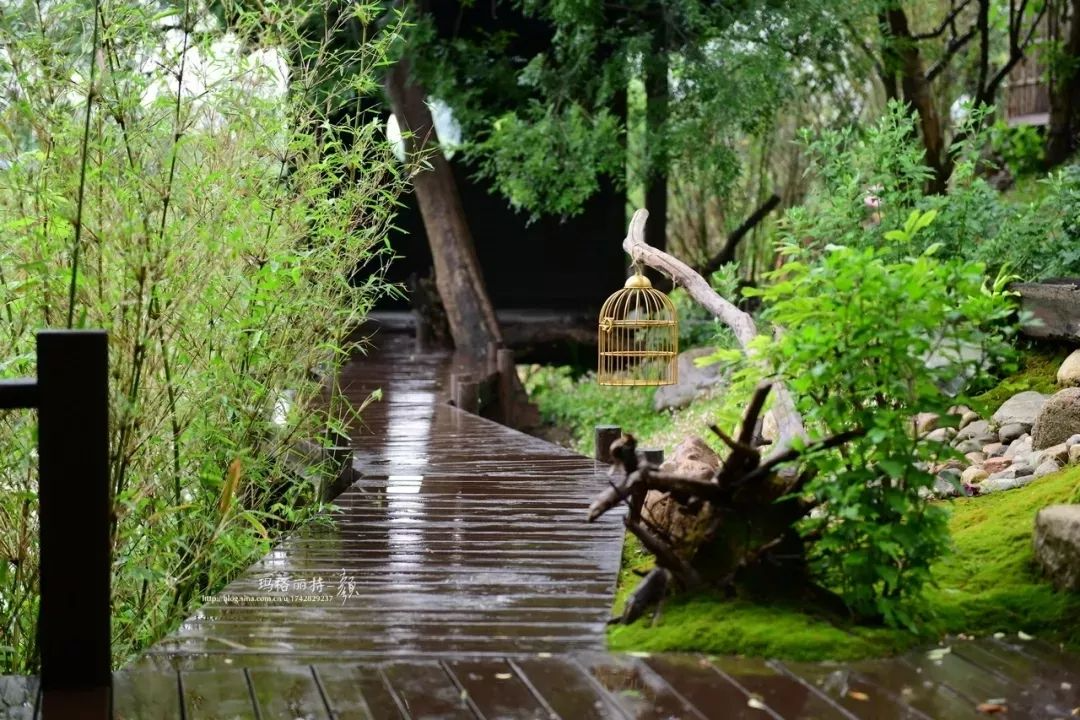
The road at this location was readjusted due to walking habits, and the distance between each stepping stone was also adjusted according to the convenience of walking; and the flower bed made of stone slabs always felt a bit high and abrupt, but it has been lowered a level in the past few days, and even the path underneath has become more colorful.
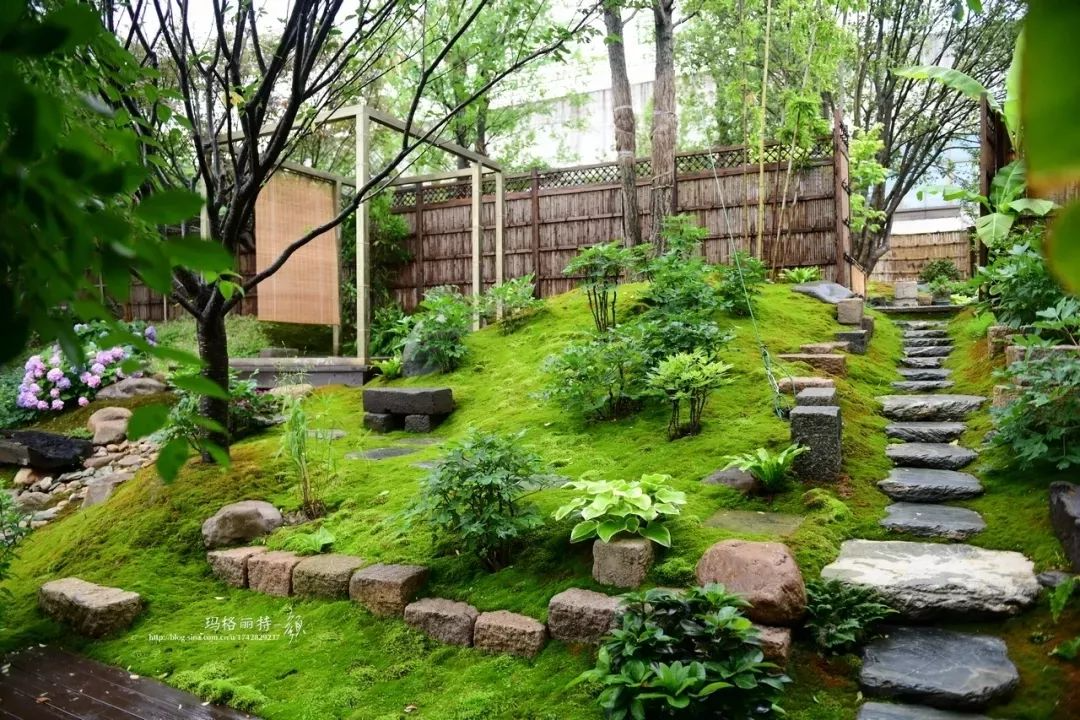
The pavilion by the wall was also added later because I wanted to stay here and smell the fragrance of the golden osmanthus trees beside the small wooden bridge in autumn, and the purple-leafed red maples on the other side drifting in the breeze on the green moss.
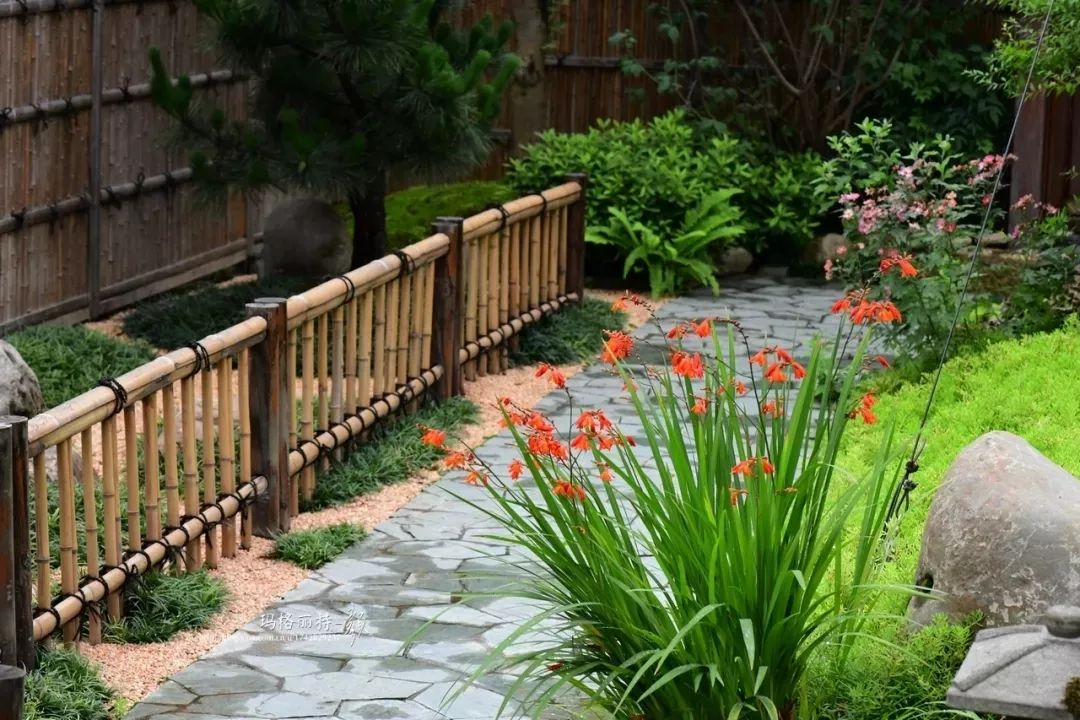
The owner of the garden spent a long time searching for the bunch of Martian flowers I sent him, and then dotted them beside the path at the entrance. There was also a stone lantern next to it. The stone lantern was too new, and a piece of moss with soil on it immediately gave it a sense of age.
The peony garden, just below the fence, is close to the river. A stone-paved path has been adjusted for ease of walking. When it snows, the yellow daffodils and purple grape hyacinths on either side make this path incredibly beautiful.
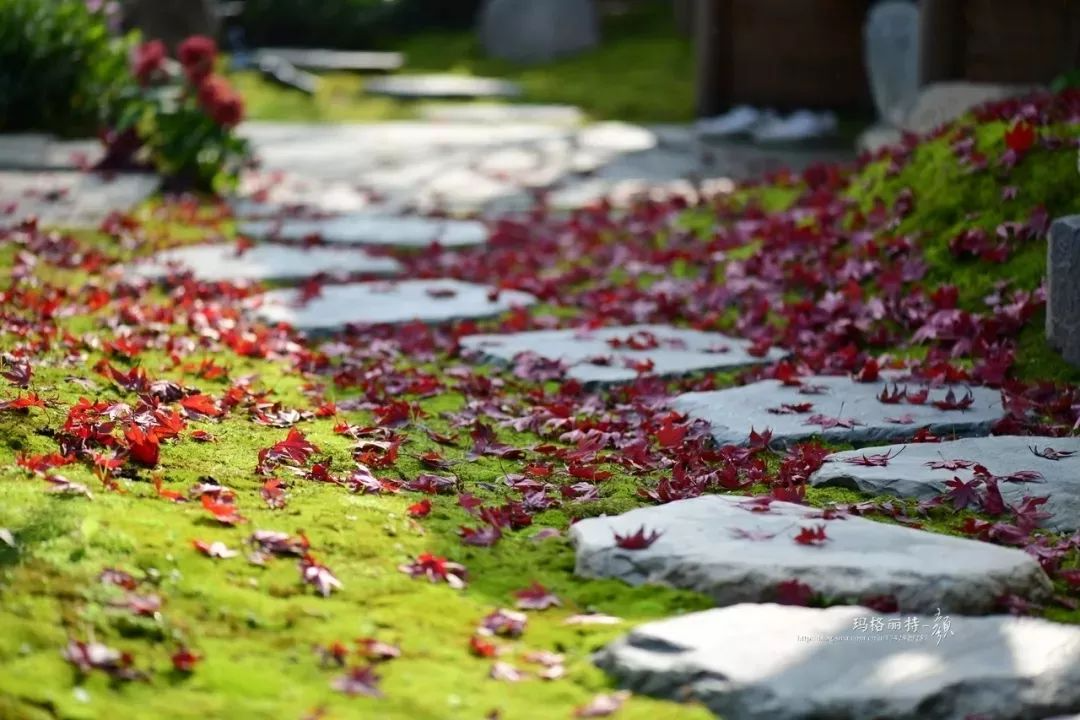
Last year, the riverbank wasn't properly tidied, and for a long time, it served as a vegetable garden. As the idea matured, we began adjusting the terrain. Gradually, a pavilion appeared, along with cherry trees, peonies, and a few hydrangeas. Later, a wooden plank path was added, and at the end, a pavilion was built, completing the garden.
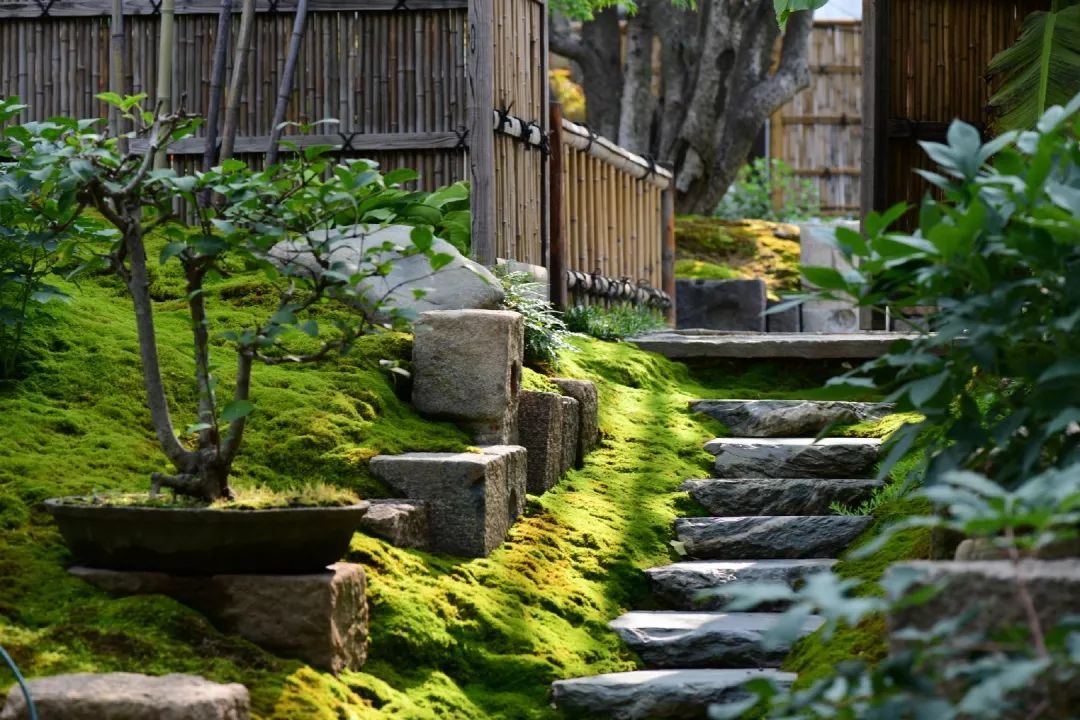
Every path, every stone, every plant in the garden, their placement and arrangement, including the wooden bridge and bamboo fence, was personally designed or worked on by the gardener, Zhang Xinghua. It's not uncommon to see the gardener's shoes and pants smeared with mud, as he chats and then goes on to pull weeds sprouting from the moss or gather fallen leaves.

▲Owner Zhang Xinghua
Many people don't understand and ask the garden owner Zhang Xinghua: "Are you a designer? Do you design gardens for others?"
"No? Then why did you build such a garden?"
“Is it tiring and hard to build Shifang Garden?”
It's hard to explain all this in a few words. If you're interested, you can listen to the gardener Zhang Xinghua's detailed explanation on the "CHINA Good Garden" program.
Note: This excerpt is illustrated by Margaret Yan

- Sakura Courtyard -
Fall in love with a windmill jasmine lattice wall
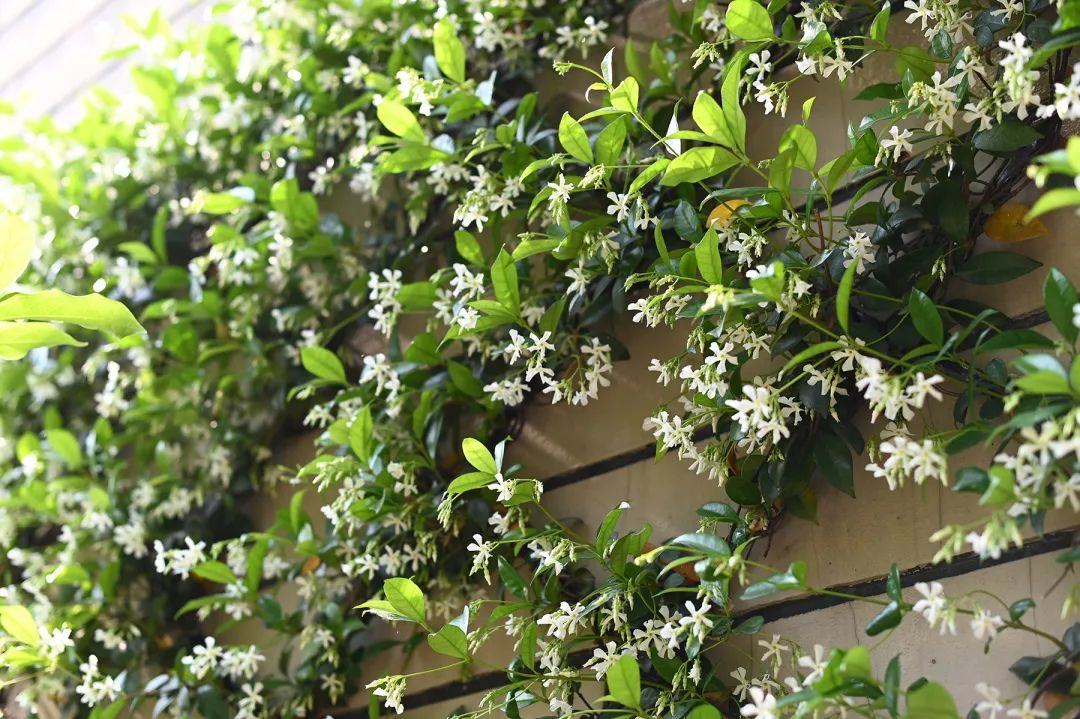
There is one vine that is almost perfect for me: Trachelospermum jasminoides. As an evergreen woody vine, it can reach a height of up to 10 meters and is very shade-tolerant, so even planting it in the north will not have much impact on its growth.
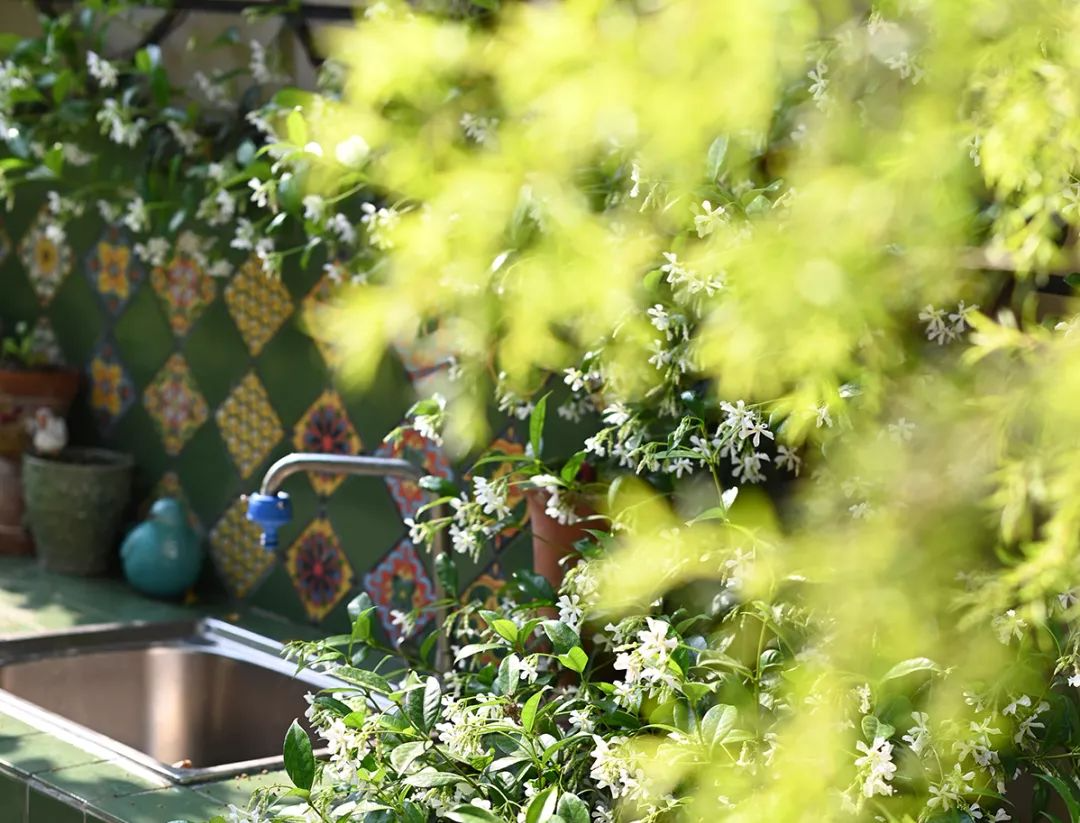
When spring comes, the little white windmills begin to spin, accompanied by a rich fragrance. Because its flower shape resembles a windmill and its fragrance resembles jasmine, it is also called windmill jasmine.
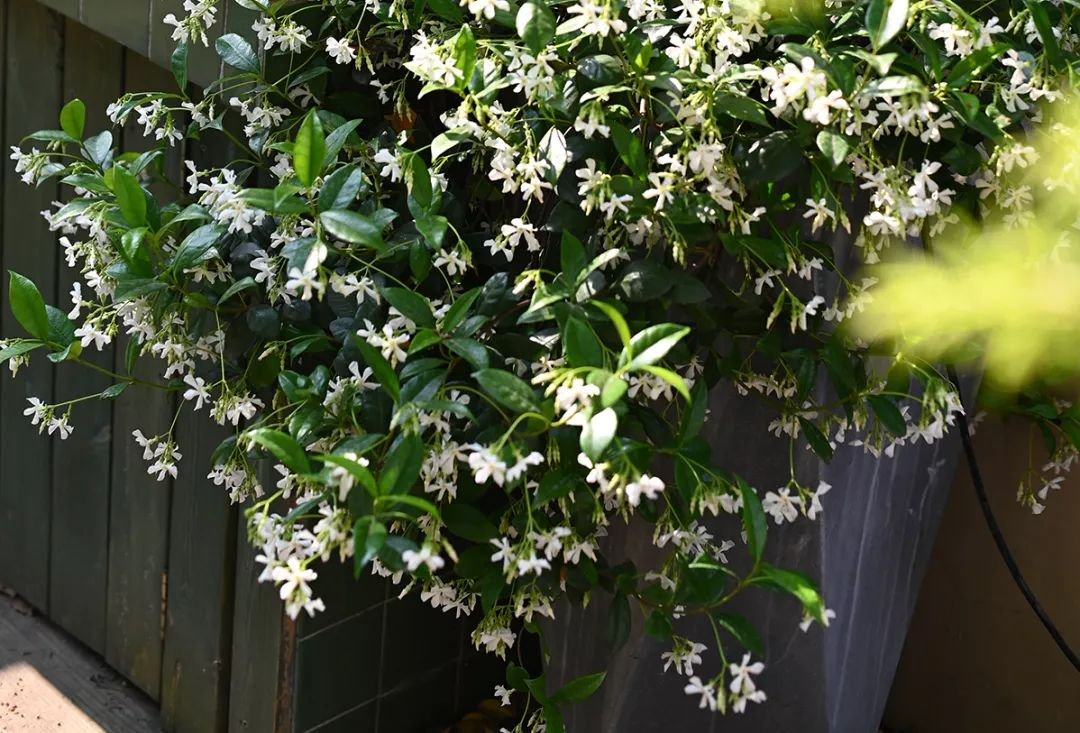
Although its flowers are small and cute, they are not delicate at all. They are not as prone to illness as roses. They grow extremely fast and have their own living roots on the branches. As long as they have something to support them, they can climb up by themselves. It is really worry-free, labor-saving and cute.
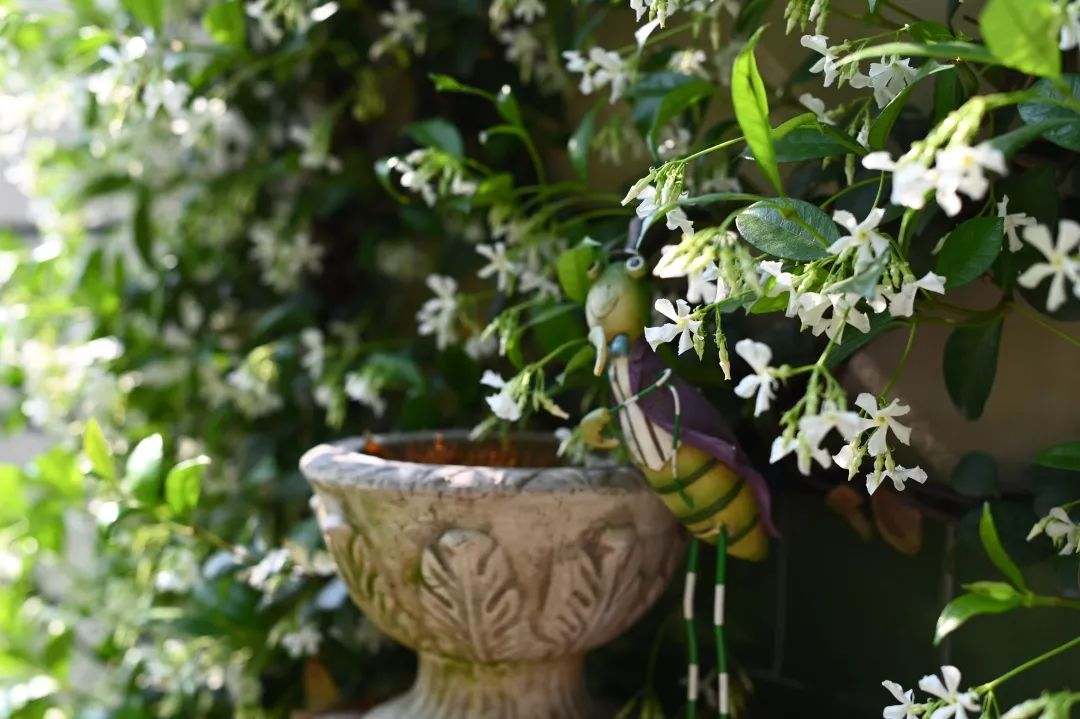
I love small florals and the color white, so how can I miss it in my garden? In order to make it appear in the most beautiful way in my garden, I racked my brains.
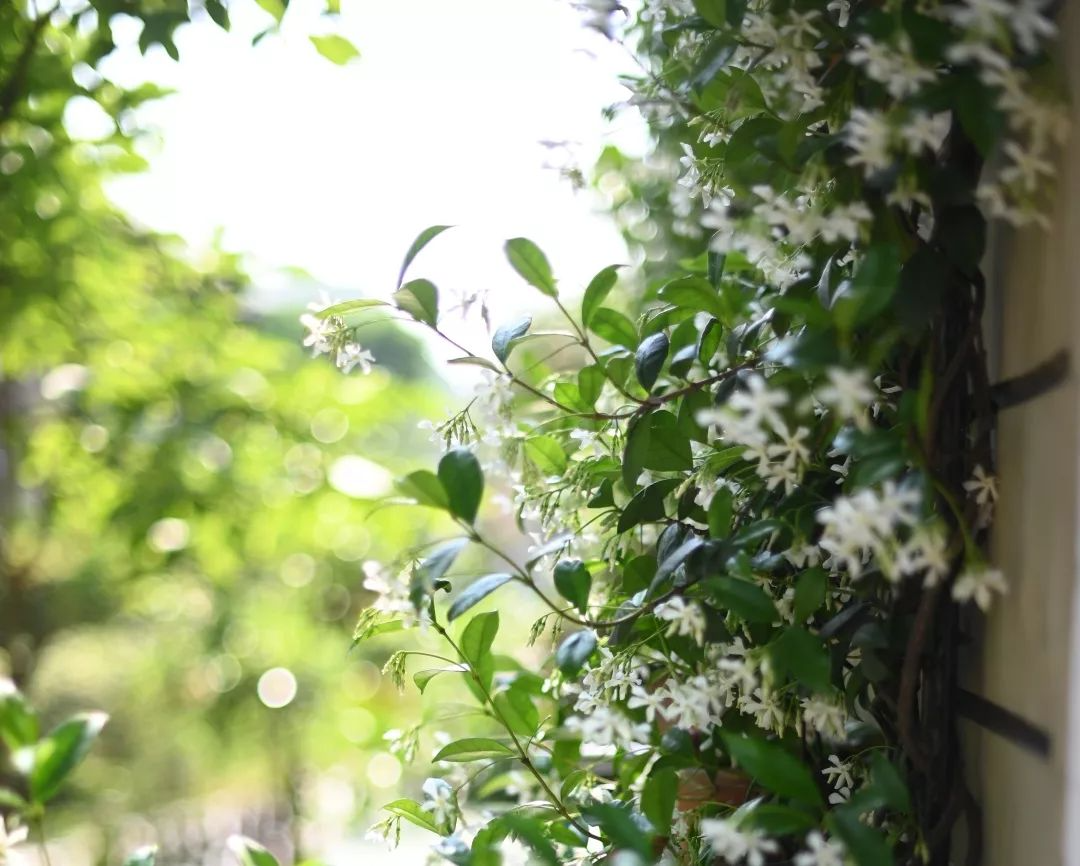
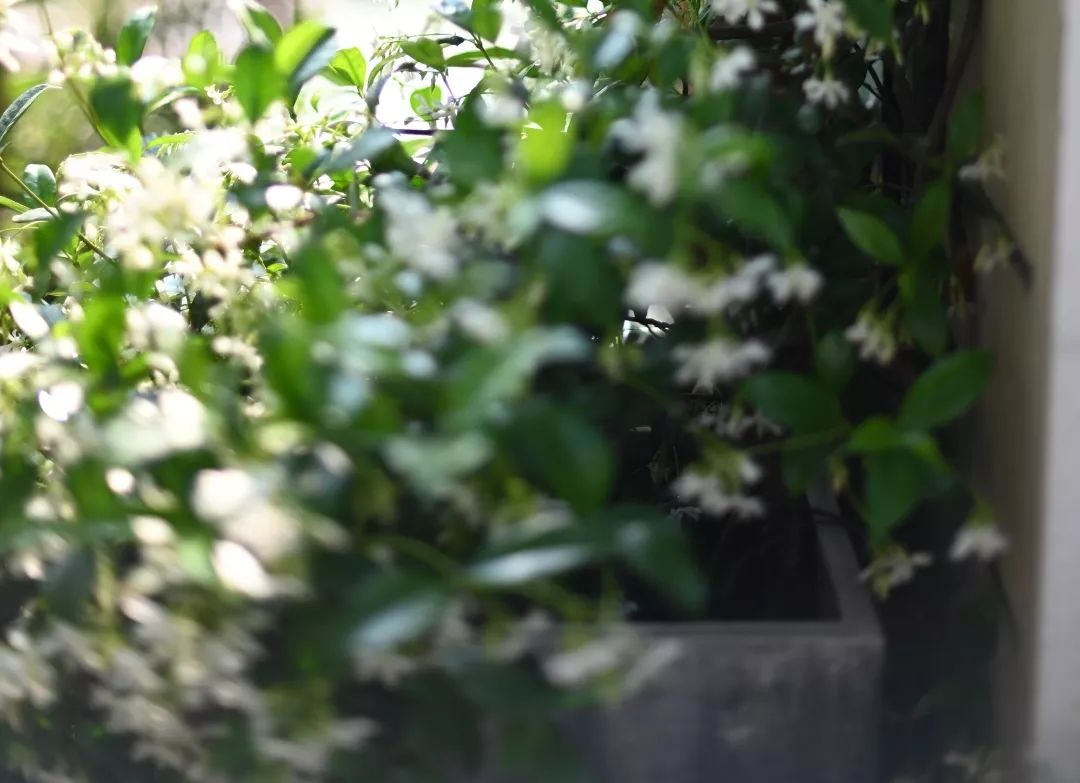
In October 2015, while renovating the North Garden, inspiration finally struck. There was a high wall above the worktop, and I recalled a picture I had seen on Weibo not long ago. So, I hand-drew a sketch based on the wall's dimensions, had a local ironwork shop custom-make a plant stand, and planted two windmill jasmine plants in terracotta pots on either side of the worktop.
From then on, I looked forward to the vines climbing all over the trellis.
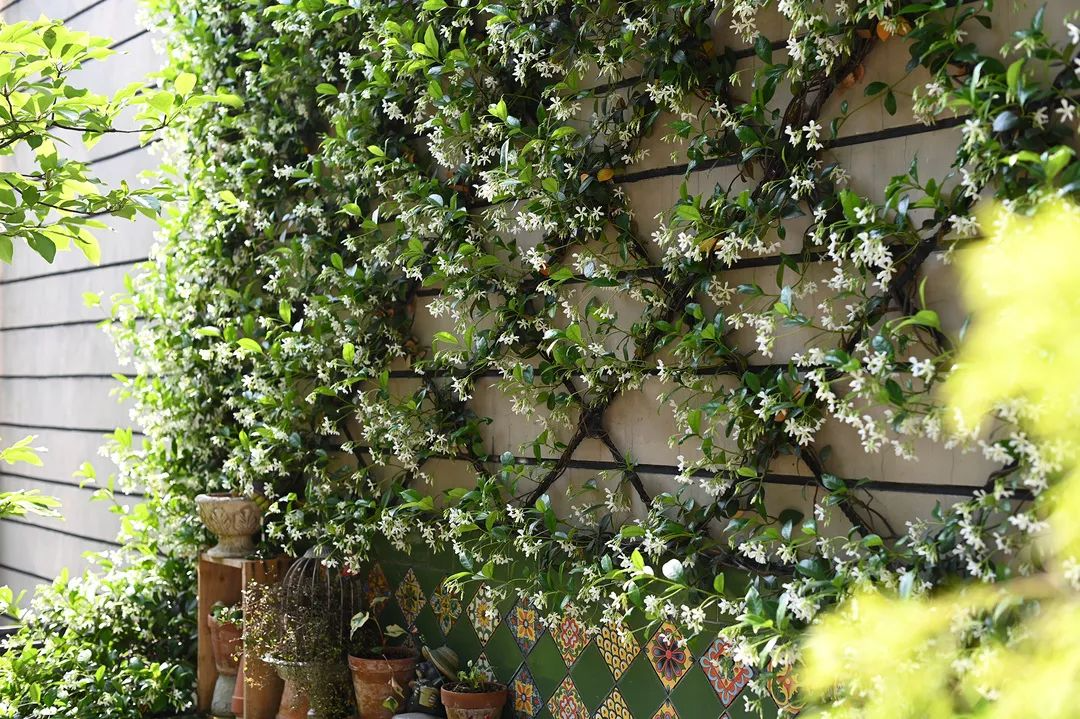
Year after year, hope spreads along the branches. Every time I wrap a grid with my own hands, hope climbs up a grid. The vine grows day by day, and caring for it doesn't require much effort. In the past few years, except for aphids, there have been no other diseases or pests.
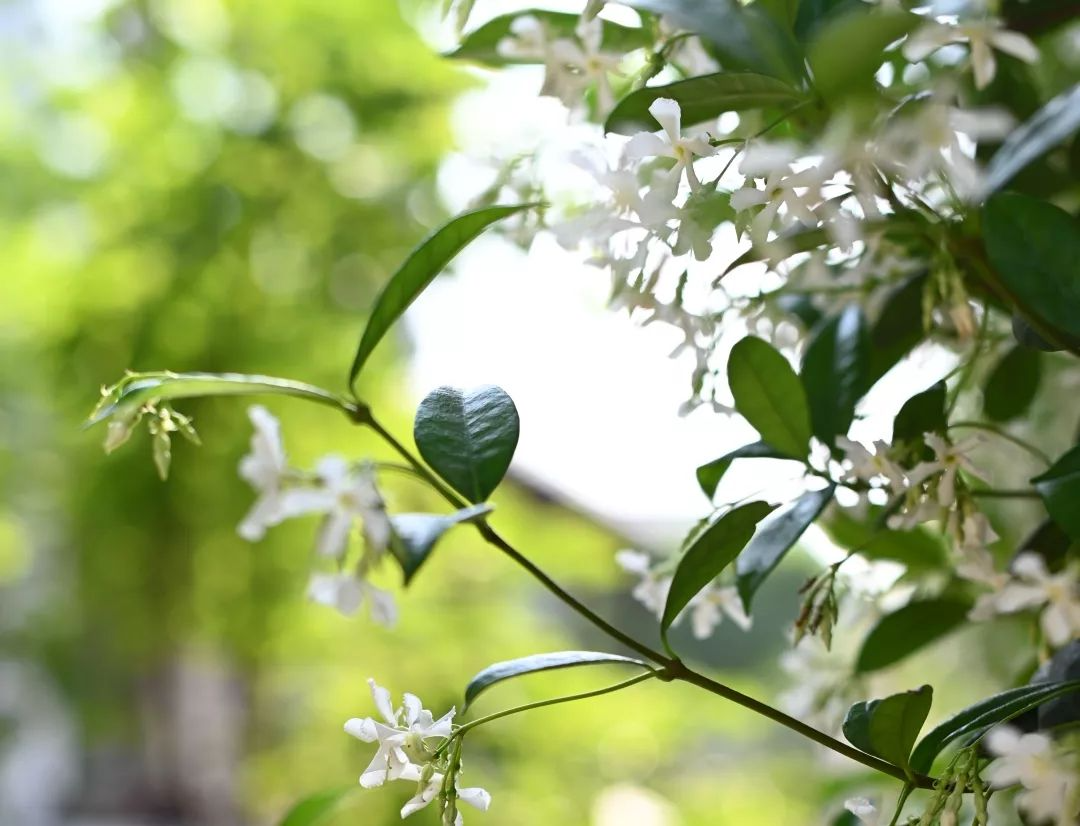
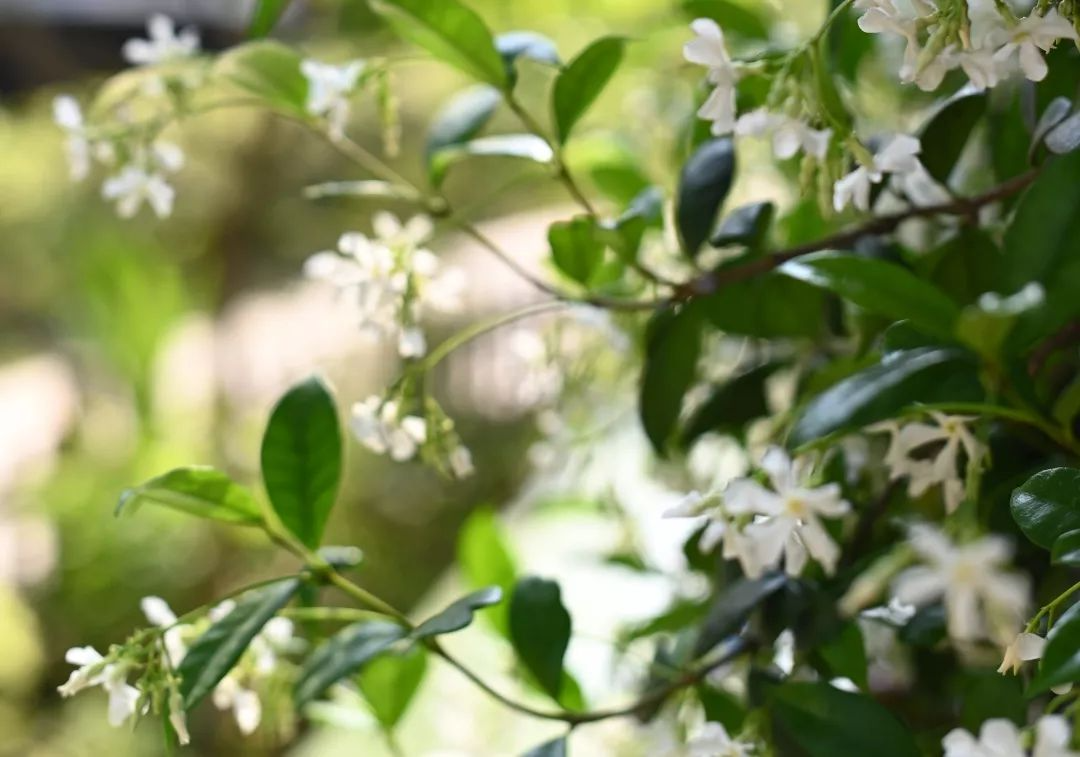
In June 2018, because I had to leave the garden for half a year, and considering that my beloved ivy was at risk of drying out in the red clay pots, I moved them to two cement pots that were nearly 90 cm high.
Fortunately, I was relieved to see that they were healthy when I returned home six months later. However, the branches had become tangled because no one had taken care of them. I spent nearly half a day combing them out, re-wrapping them around the empty grid, and trimming off the excess branches. Finally, they looked refreshed.
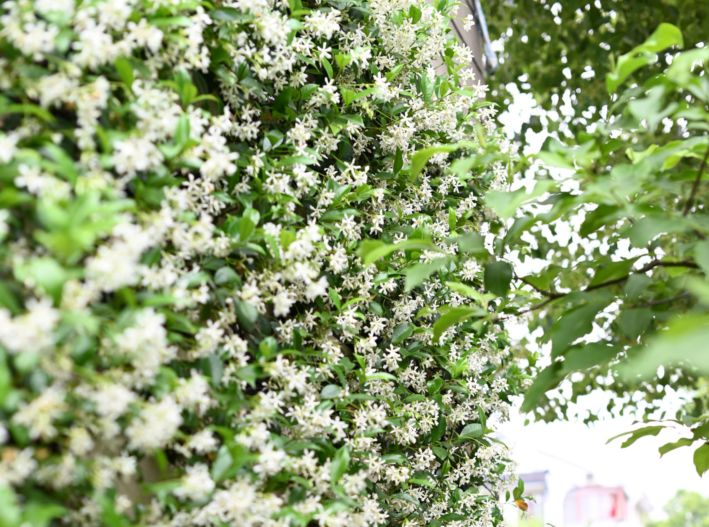
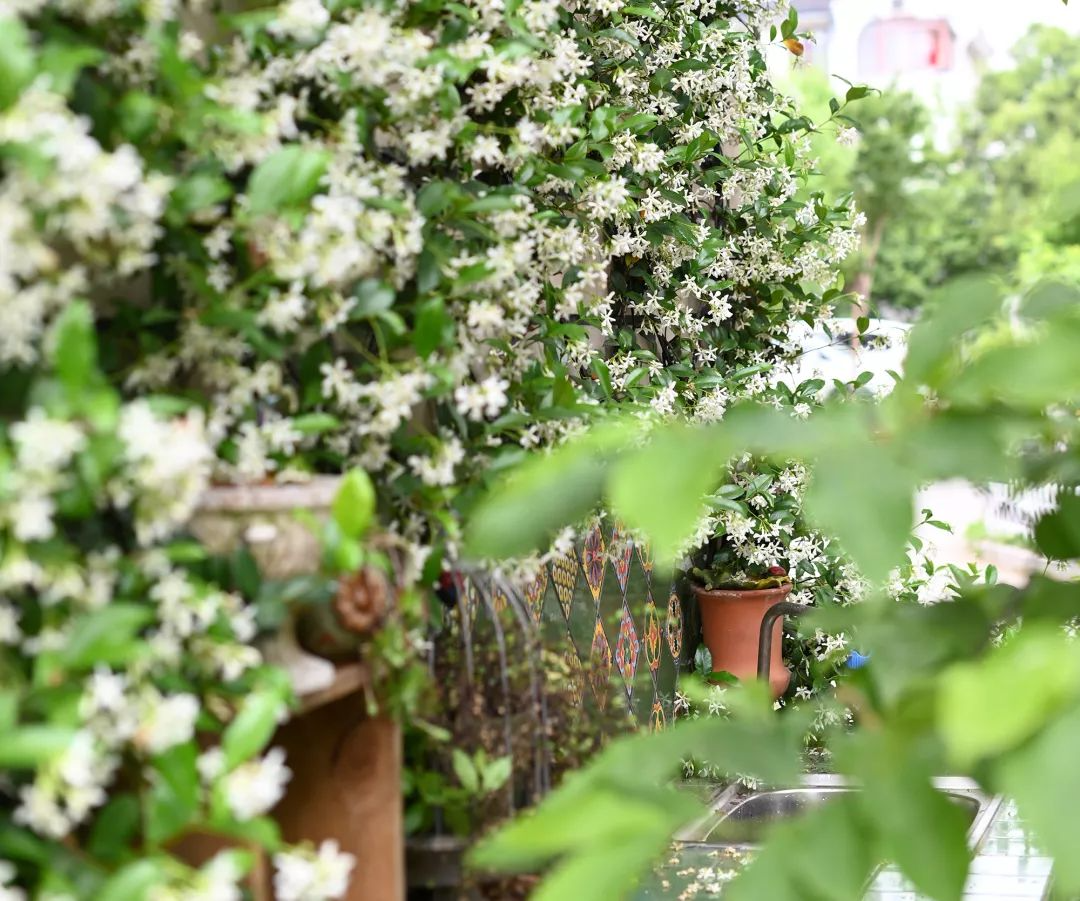
In the spring of 2019, the dream of owning a windmill jasmine lattice wall was finally realized perfectly. Let us appreciate its beauty together.
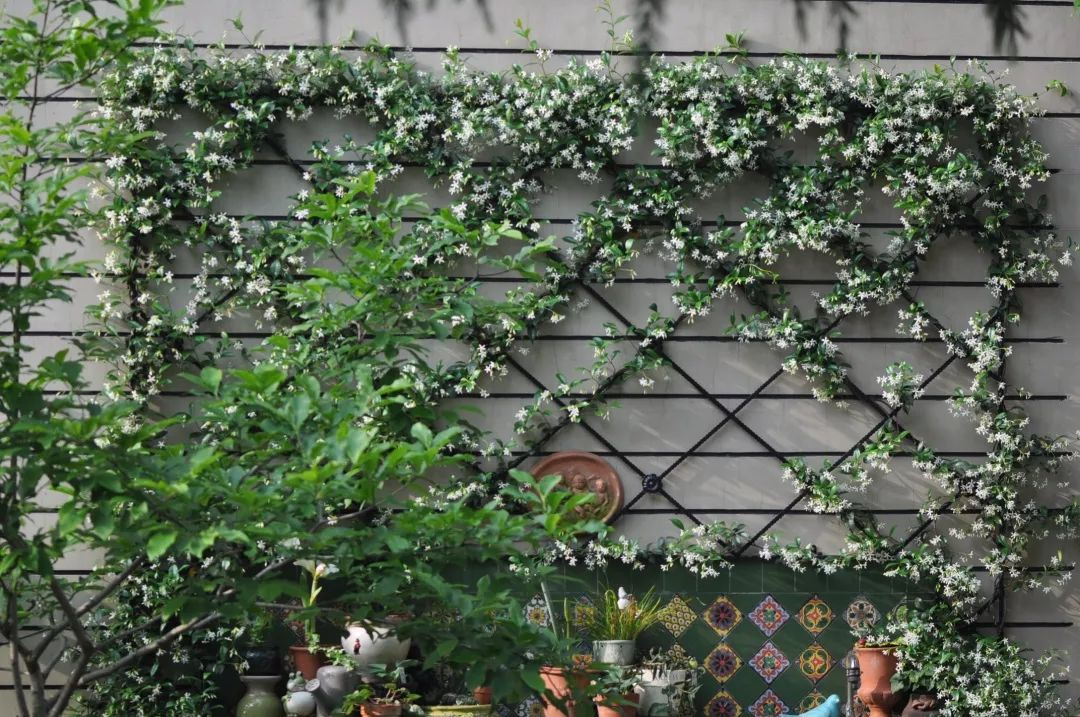

- Cow Moss -
Accompanied by flowers, grass, soil and moss
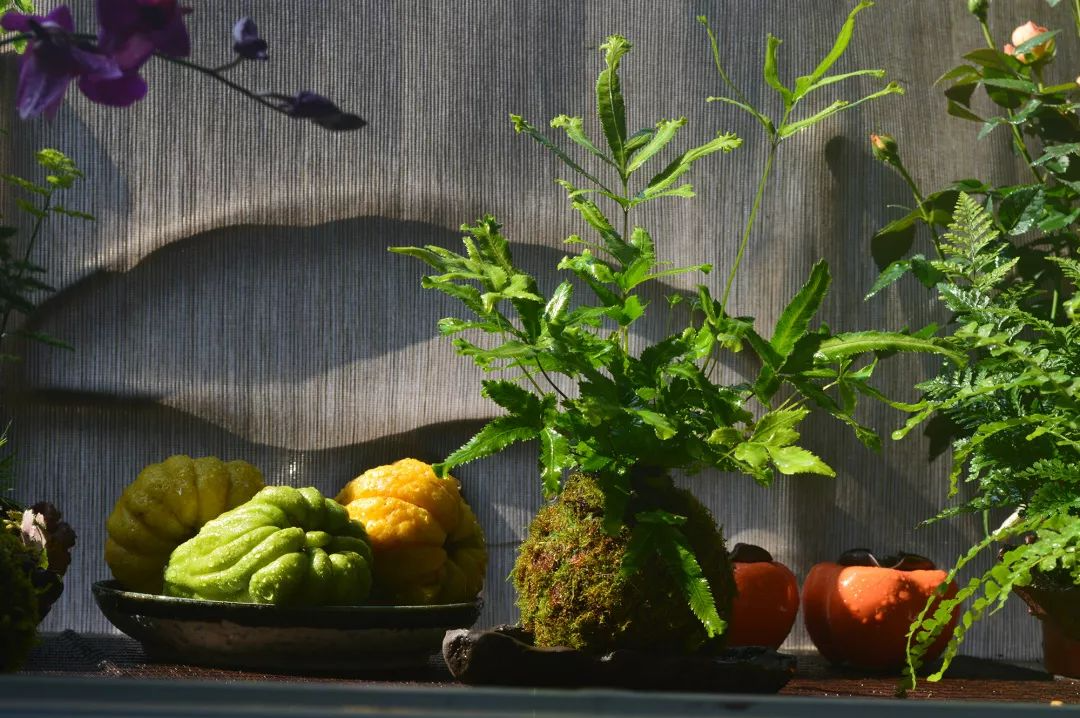
I love flowers and plants, regardless of their value. Peonies are naturally magnificent, yet a blade of grass in the mountains can also sway and be graceful. After years of wandering the mountains, surrounded by flowers, plants, soil, and moss, I finally found my true calling.
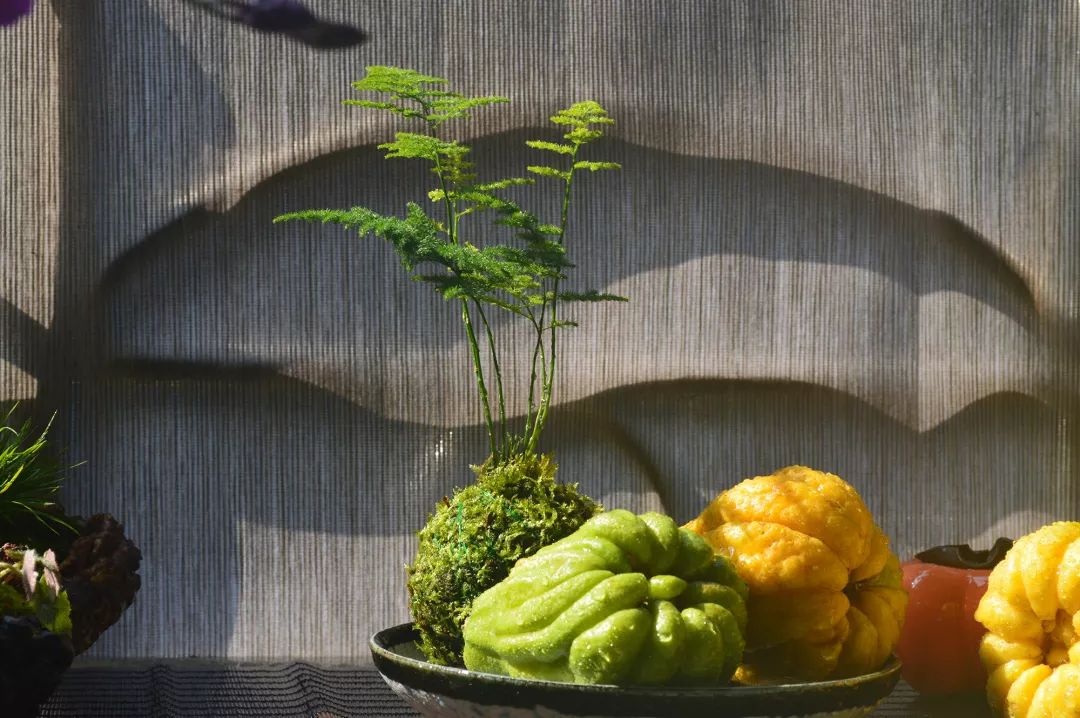
Introduction to several moss works

Phoenix tail bamboo moss landscape hand-pinch pot
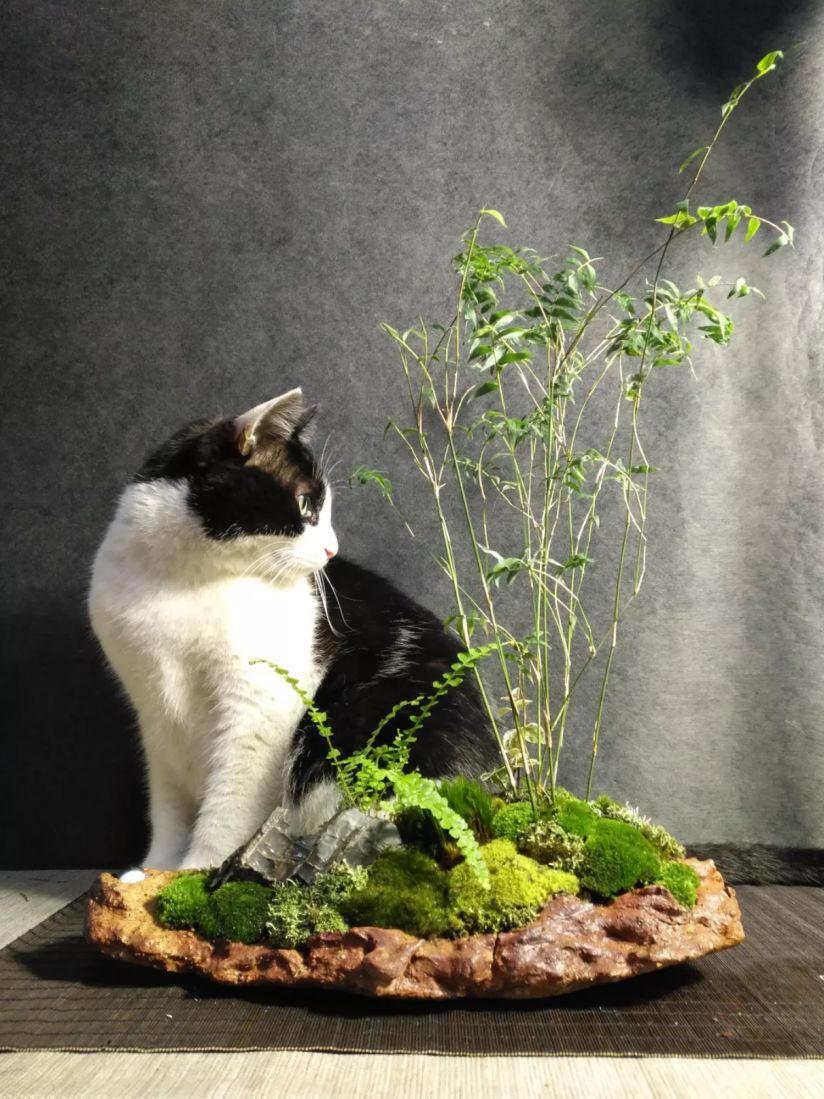
Plants: Pteris fasciata, Asplenium truncatum, various mosses
Tray: Hand-made tray
Matching stone: Fengling stone
Soil: peat soil, volcanic rock
Maintenance: Water thoroughly every few days, depending on weather conditions. Save rainwater daily and use a watering can to spray the plants (including bamboo moss) to keep them moist without stagnating.
Placement: In a shaded area outside the open air, away from direct sunlight. In a bright and well-ventilated area indoors.
Moss potted plants are very suitable for modern home decoration. They are small and fresh green, save space, have low requirements for light, and prefer a cool and humid environment.

moss ball

Moss Jade, a flower pot that requires no vase, is simply wrapped in moss. It can be paired with a variety of different flower pots or hung. It's suitable for a variety of home or commercial decorations.
Common horticultural plant Moss Jade
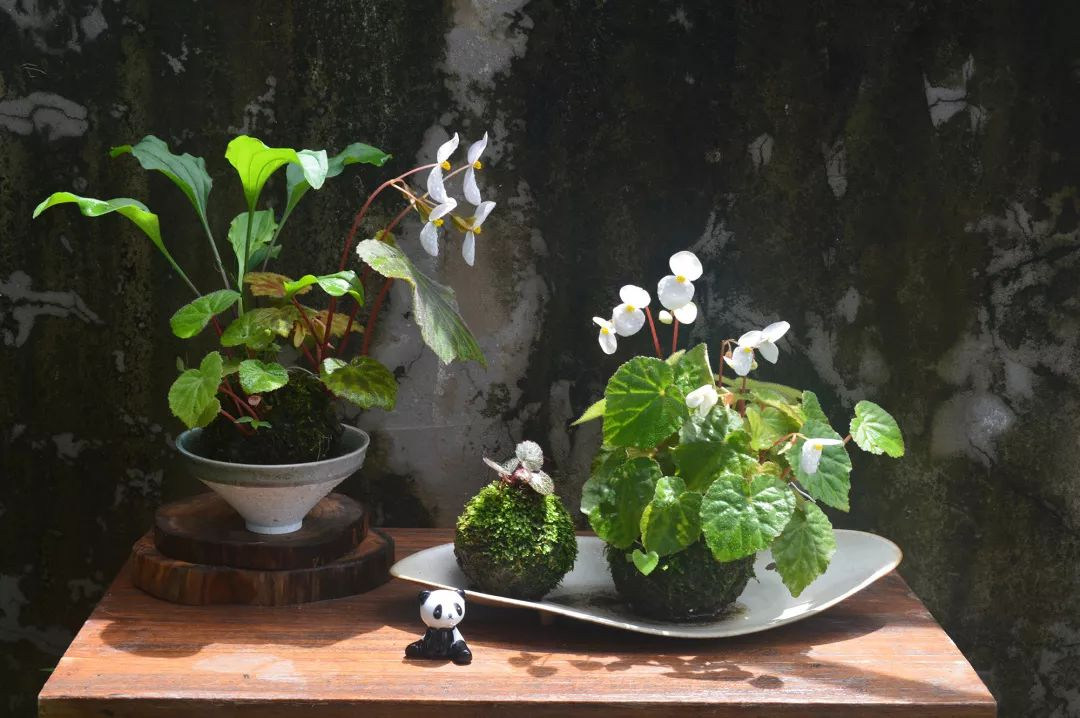
The plants used are mostly shade-loving ferns or foliage plants. It is not recommended to choose succulent plants that like light but not moisture.
Preparation method
You can buy various ferns and foliage plants at the flower market, such as maidenhair fern, phoenix fern, wolftail fern, asparagus fern, various arrowroots, etc. Generally, the plants with soil are wrapped with gray moss, hand-folded into a nearly round shape, and fixed with environmentally friendly wire or elastic rope.
Daily maintenance
Depending on the weather and surrounding conditions, observe the plant's vitality and weight. Soak the soil ball in water every few days until the bubbles stop rising. Use a spray bottle to mist the moss and plant leaves daily. Keep them moist. If it rains, let them soak for a bit; the moss will grow especially well.
Wildflower moss ball
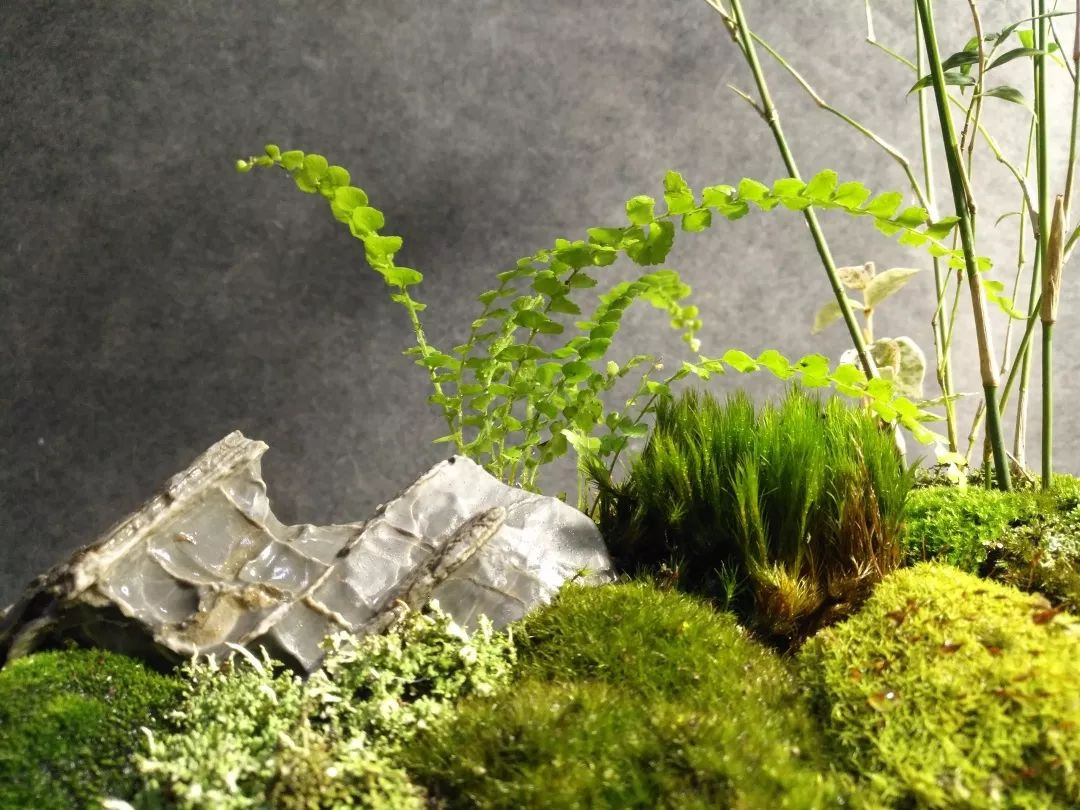
Every plant has its own beauty. In addition to the common garden plants, many wild plants are also very beautiful. We can combine one or more wild plants in a moss jade and appreciate the beauty of different plants at different times.
The white flowers below are wild begonias that bloom again every year. When making moss balls, I deliberately added a plantain to the moss balls. When the begonias are flowerless and leafless, you can enjoy the plantain.
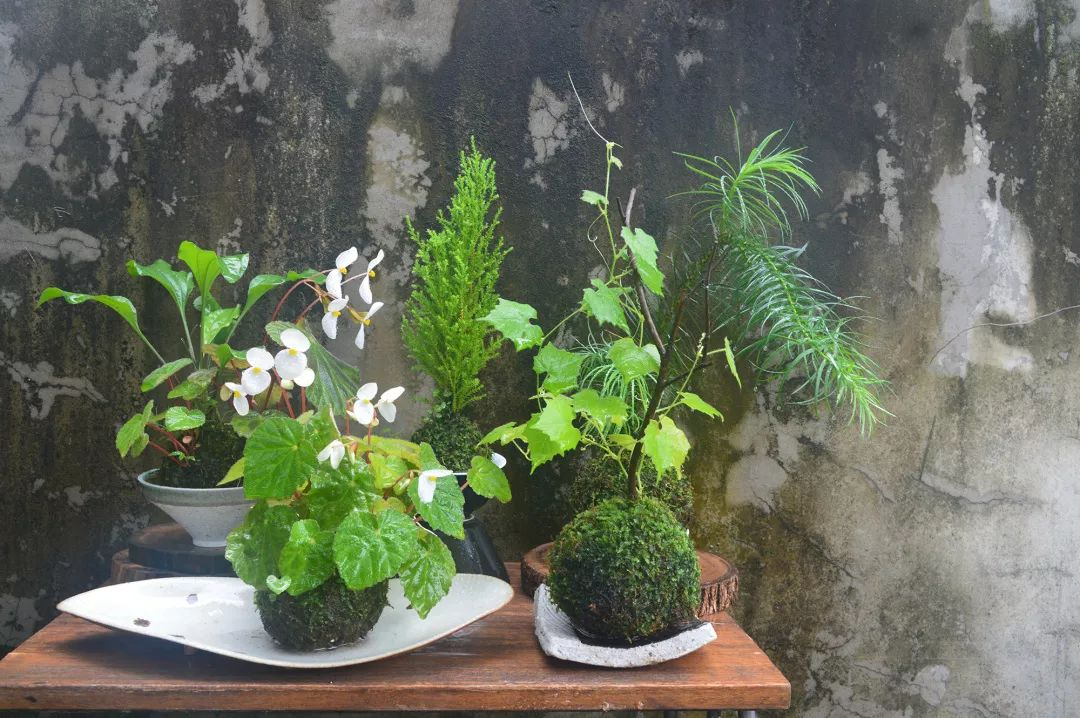
In short, mosses and moss jade are best suited to areas with low light levels, but care should be taken to ensure they are well-maintained and require frequent watering. Mosses primarily breathe through their leaves, so watering alone is not recommended. Otherwise, water will accumulate at the base, rotting the leaves while the surface doesn't absorb enough water, causing the moss to turn black or yellow.
The light should not be too dark. In Chengdu, it can be maintained outdoors in spring, autumn and winter. Shading is only required in summer. In addition, if you can't find fresh moss or find it troublesome to maintain, you can use sphagnum moss instead.
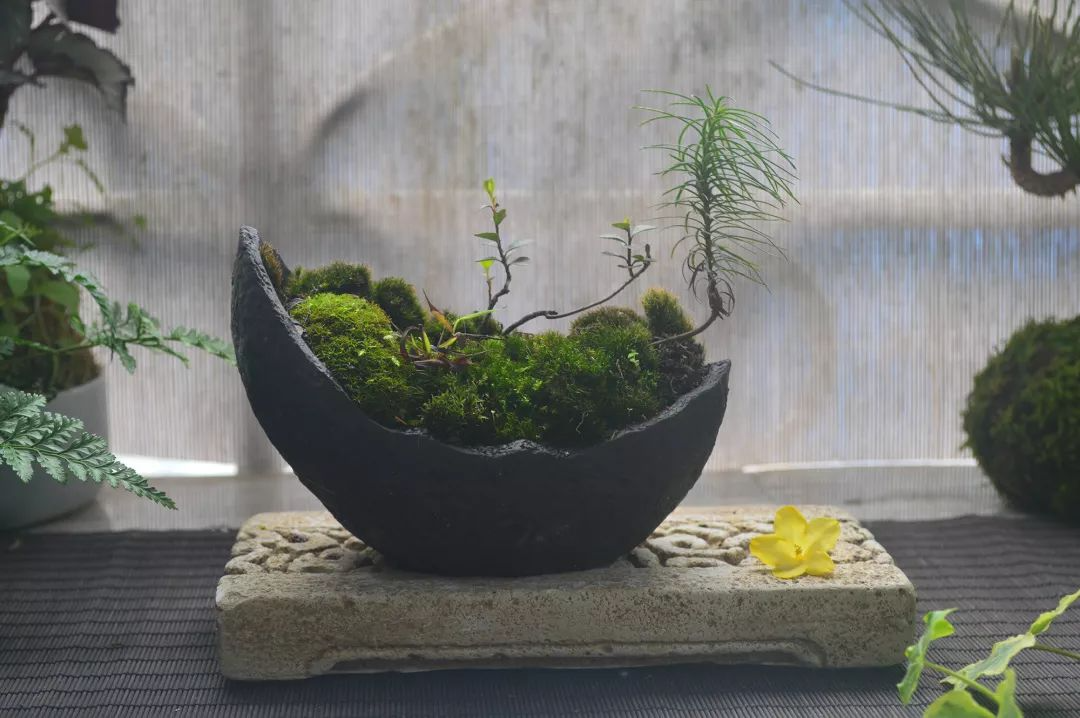
For example, you can wrap drought-resistant foliage plants such as spring feathers with sphagnum moss and hang them in the air, which is also ornamental. Moreover, they do not need to be soaked or sprayed with water frequently, reducing the frequency of maintenance.

- Jingting Garden -
Time is quiet, let's build a garden
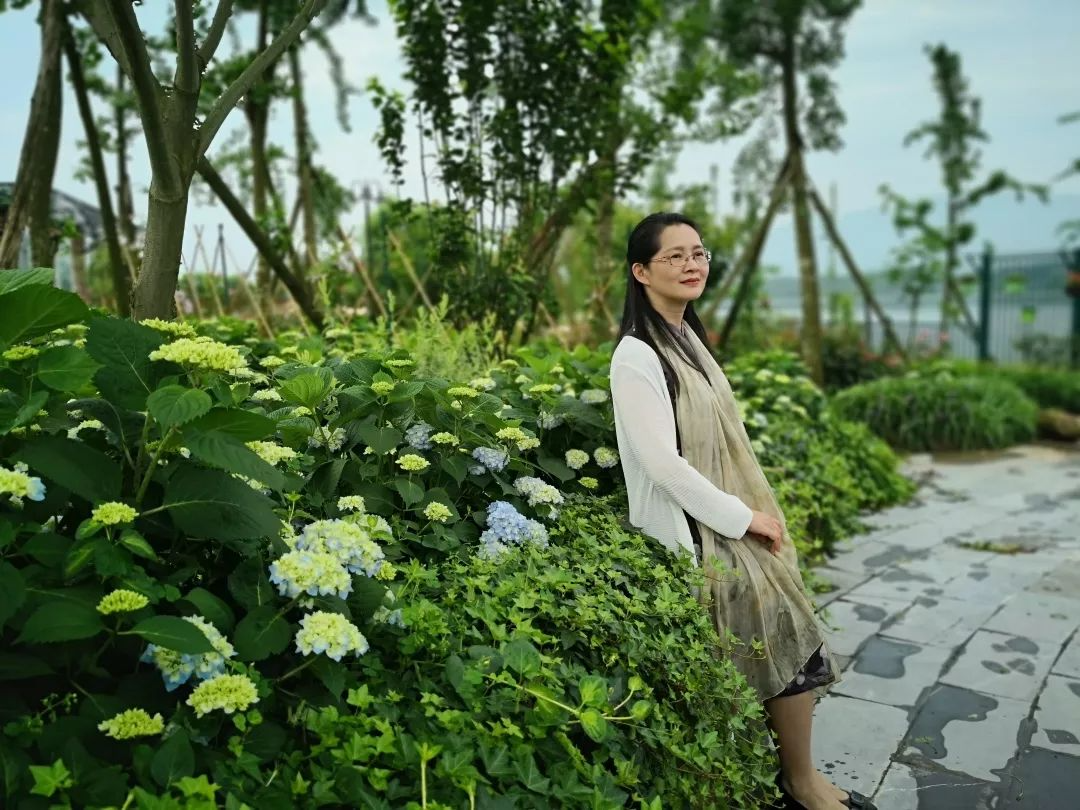
The idea of building a large garden began with my encounter with a piece of wasteland one evening in early summer 2017.
This is a west-facing, lake-fronted wasteland nestled against the mountains. Standing on the slope, I can see the vast expanse of the lake beneath the setting sun, its surface reflecting the mountains and the setting sun. As the evening breeze blows, golden ripples dance on the shimmering water. Surrounded by mountains, there's no sound of life, only the occasional bird song piercing the tranquility of dusk. Everything is as serene and beautiful as a paradise.
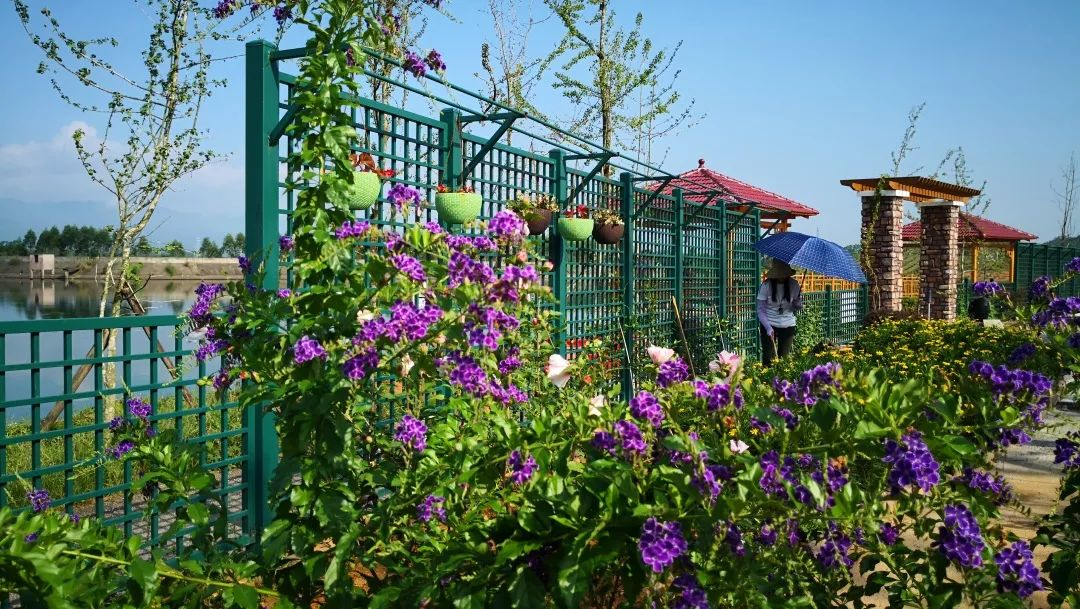
However, as the garden construction work began, various difficulties also became increasingly apparent. Because the garden is located in a remote rural area, after construction began, it was gradually discovered that there was a serious lack of technical personnel and workers, and the funds for garden construction were also extremely scarce.
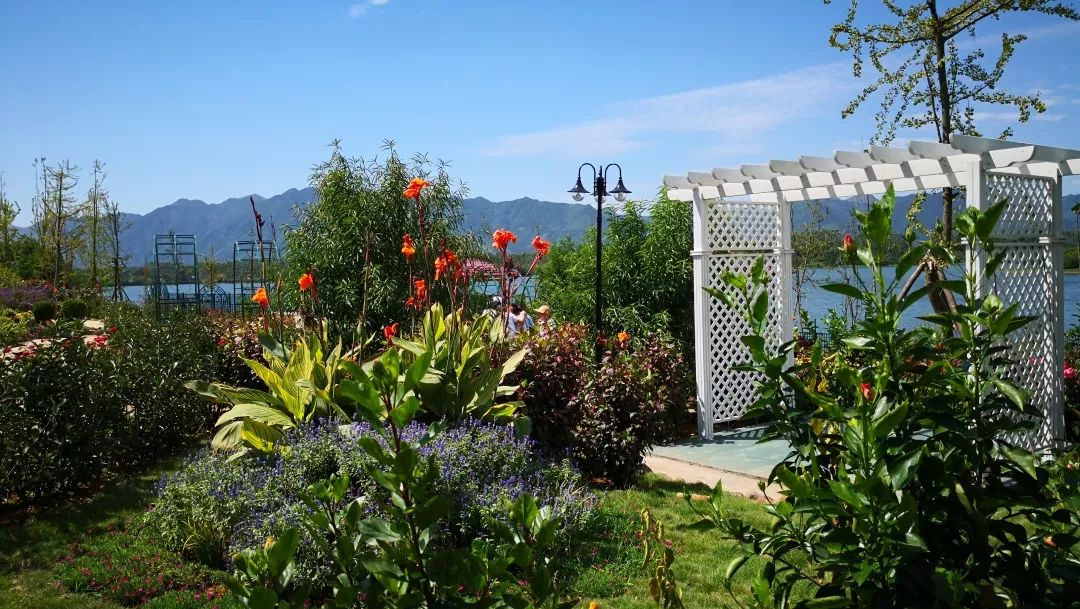
While the garden was being built, the selection of flower varieties for it was also ongoing, and I was extremely careful and cautious in choosing the varieties.
In the more than 30 years of flower cultivation, I have grown hundreds of flower varieties. In addition, I pay attention to collecting and organizing information on various flowers suitable for the local climate, so I have a clear advantage in the selection of varieties.
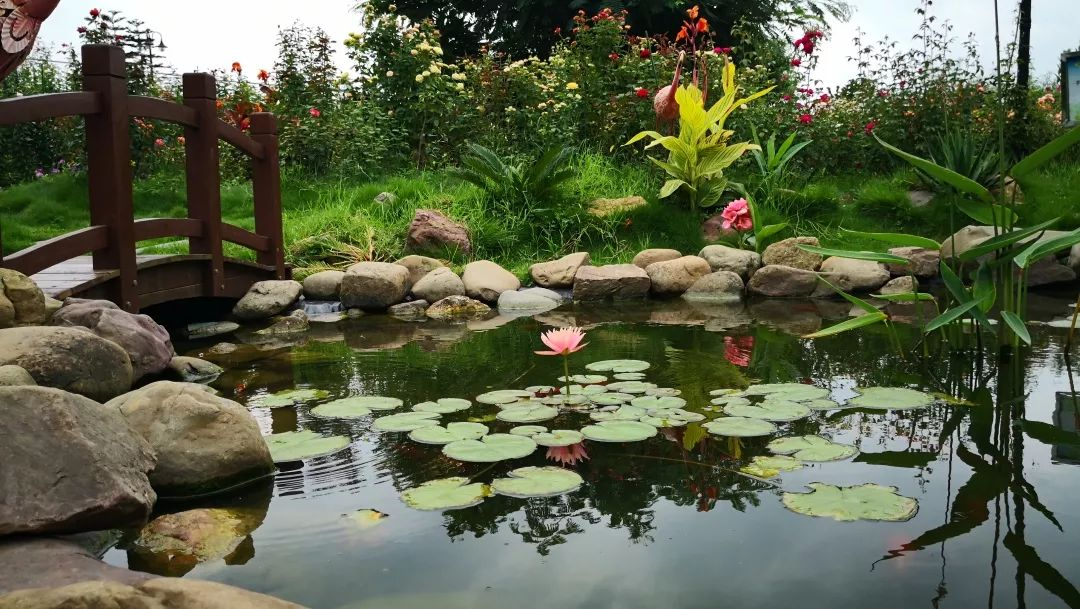
It has been a year and six months since the first seedling was planted on October 14, 2017, until this spring.
Due to the limited funds for building the garden, in order to buy as many flower seedlings as possible with the limited funds, I used the powerful Internet to collect varieties across the country, bought the cheapest toothpick seedlings, and then tried my best to lead the workers to grow the seedlings. The physical strength, mental strength and technology consumed in this process are really hard to describe.
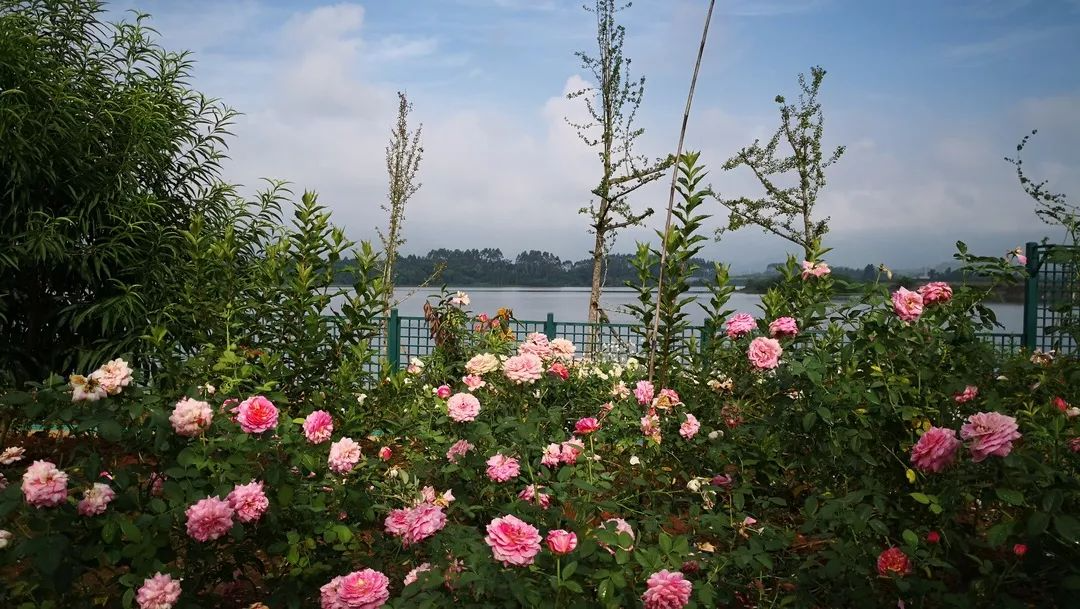
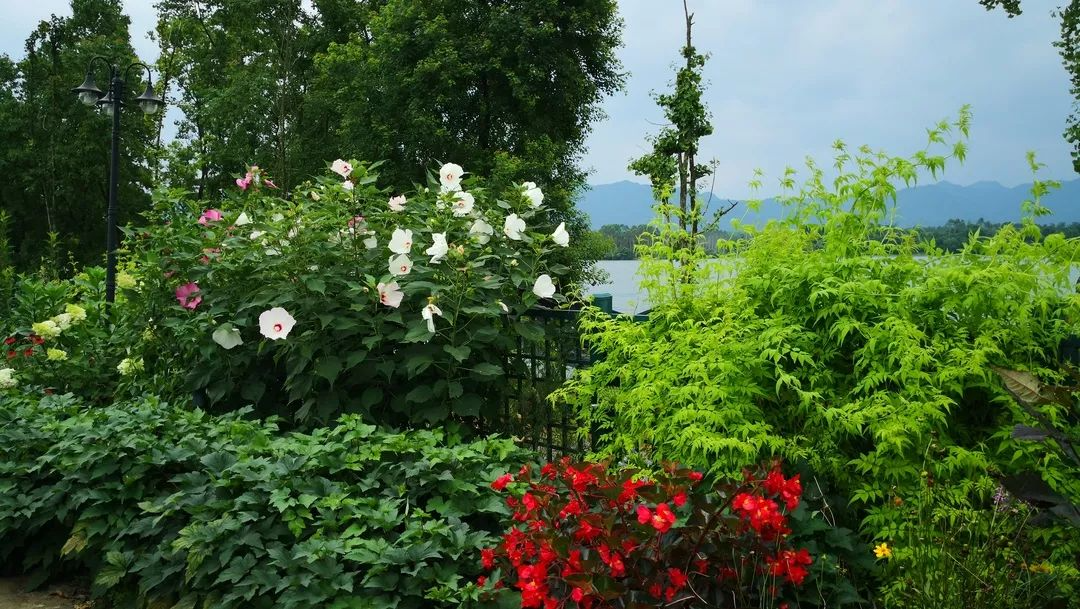
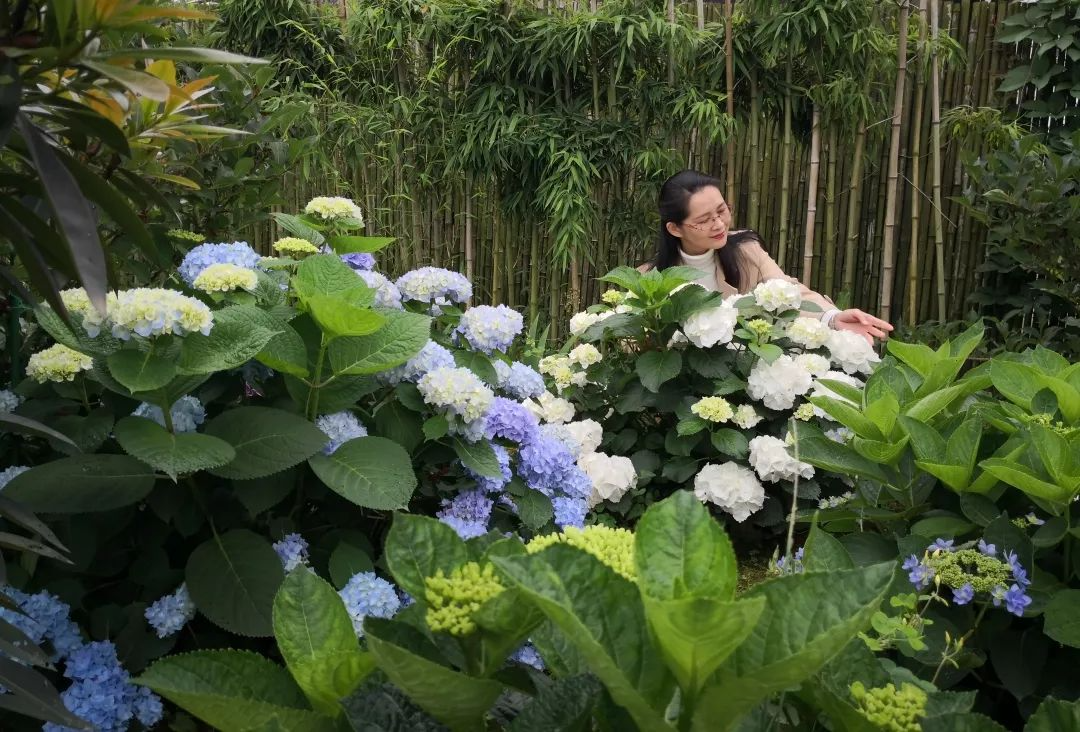
Finally, hard work pays off. After 8 months, in October 2018, the initial results were seen. The small toothpick seedlings had quickly grown into "big trees" with a diameter of more than one meter, and the garden was full of flowers, which was a miracle.
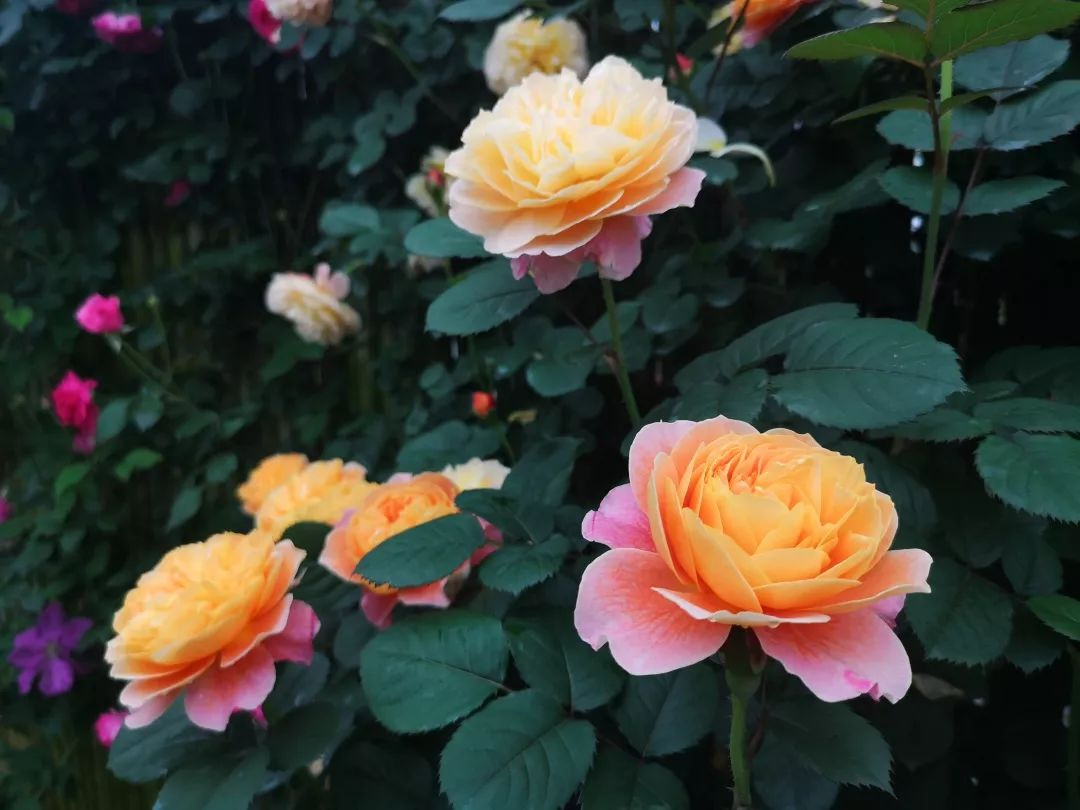
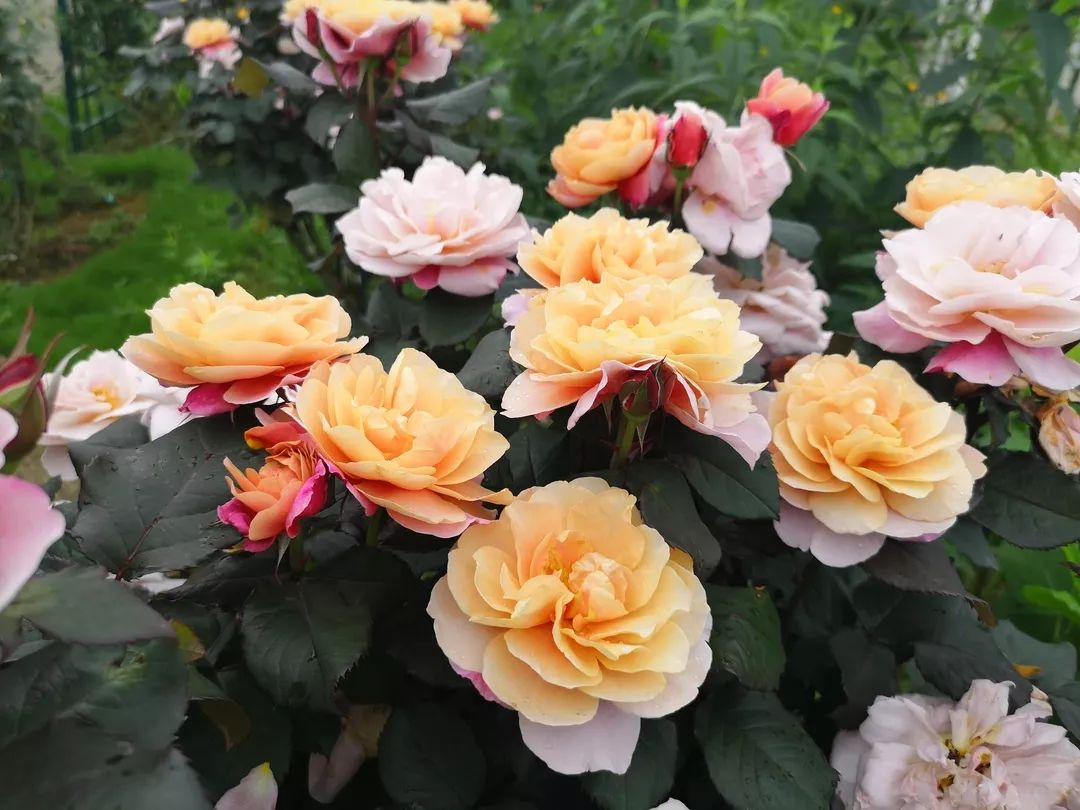
By April 2019, the garden had begun to take shape, its spring blossoms stunning countless visitors, and the 200-meter-long flower wall went viral on social media. Over the past year, watching this barren land gradually transform from hundreds of design drawings into reality has been a source of mixed emotions.
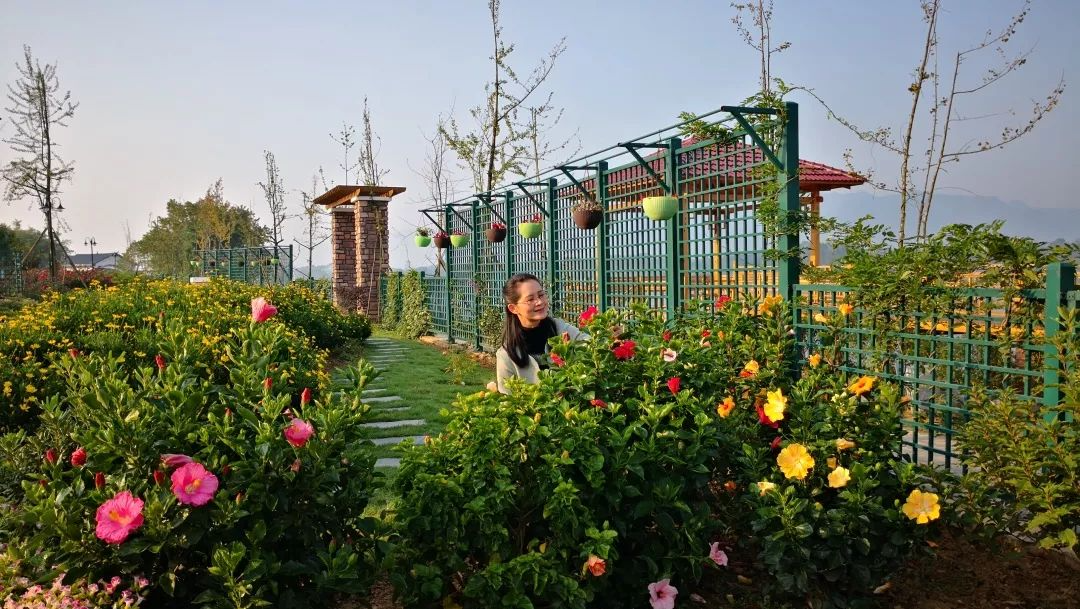
In this bustling world, possessing a spiritual home is everyone's dream, and this luxury is not out of reach. As the saying goes, "One flower, one world; one leaf, one bodhi tree." With ingenuity, a bright window can become a garden within.
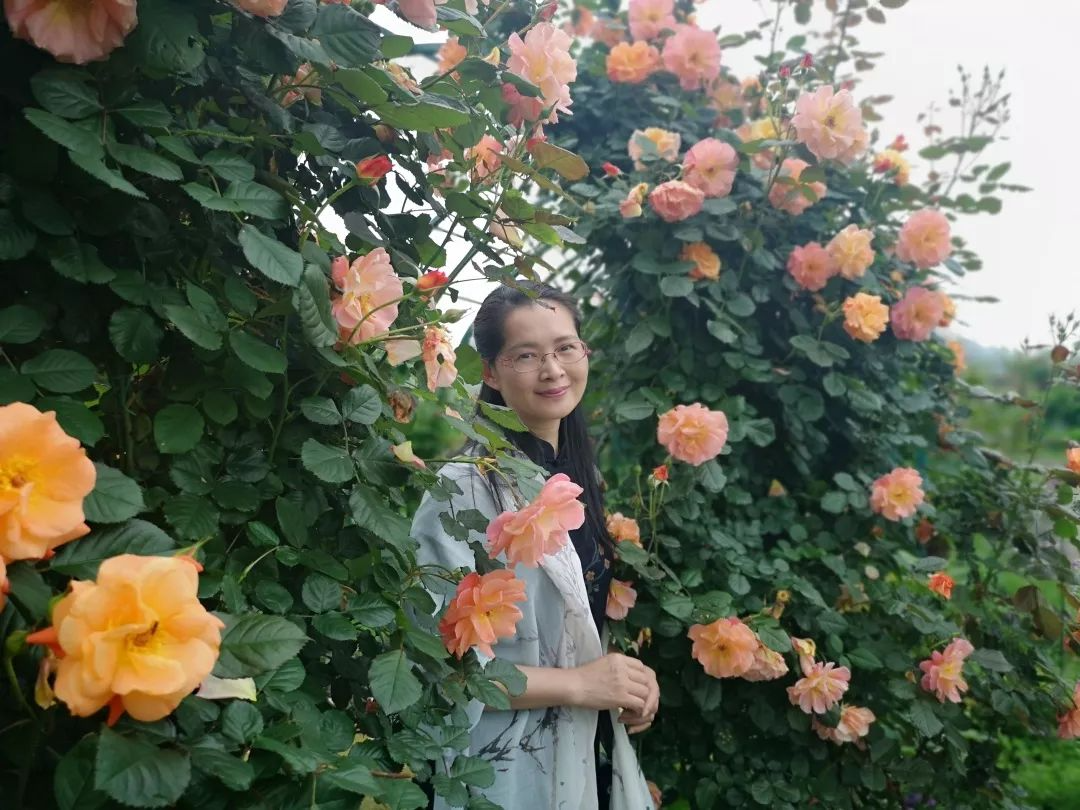
▲Garden owner Feng Tao
For me, gardening and flower gardening are deeply rooted in my inner passions. When I create a garden with a woman's perspective and the richness of her heart, it inevitably carries the warmth and aura of the designer. Because of this warmth, it's captivating.

- Understanding Acorus calamus -
Wild grasses are also worth careful care
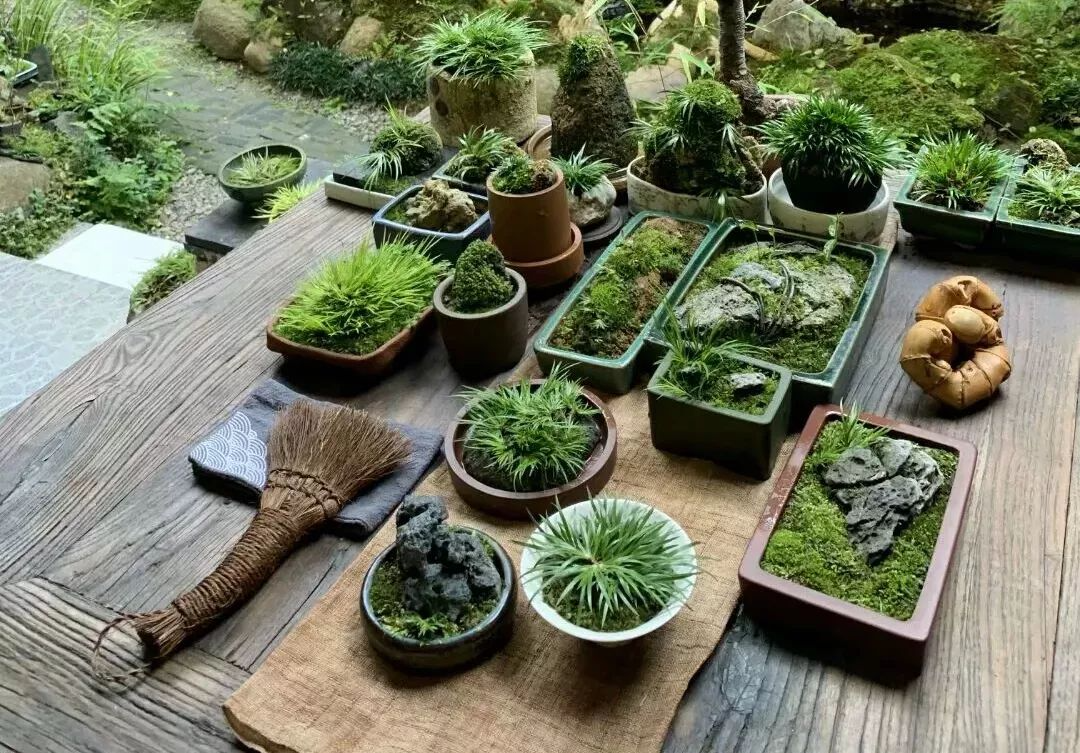
I love gardening and flowers. I have been building my own small yard for nearly 20 years, pursuing a natural and wild style. I constantly draw inspiration from nature and reach a certain level. I am also willing to learn and share with fellow enthusiasts.
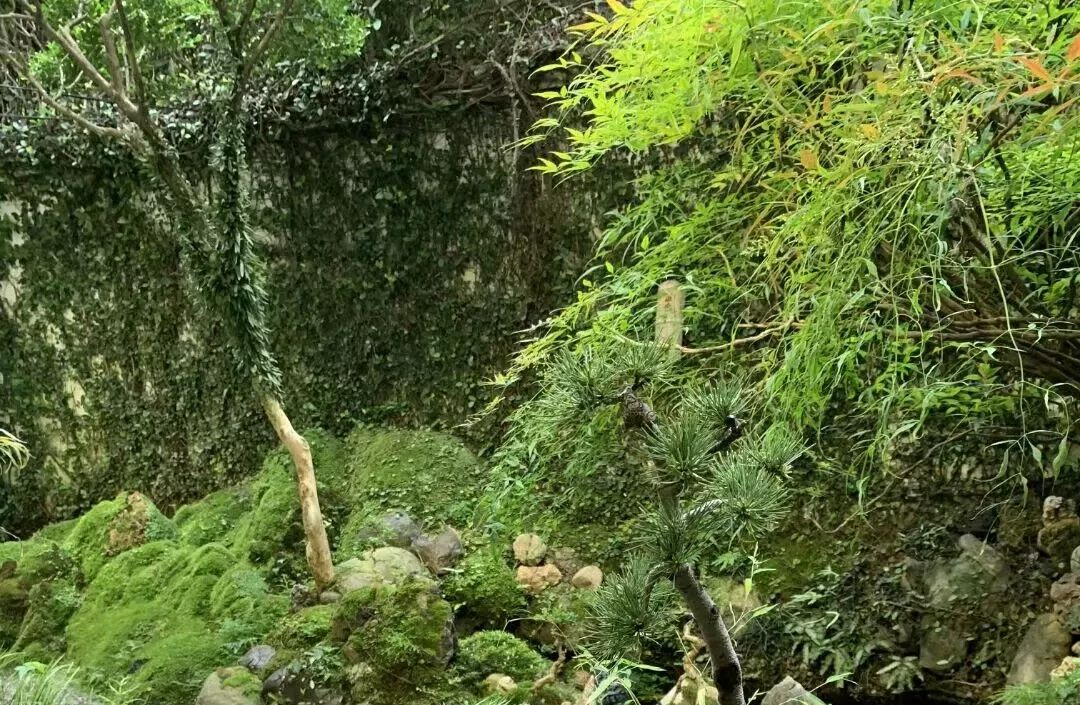
I have loved gardening and potted plants since I was a child. In the beginning, I liked all kinds of plants and flowers. Later, I started to do subtraction and pursue simple and artistic gardening. Now the main elements in the yard are moss, calamus, wild grasses, water systems, and vines. I do the same thing day after day, working hard and happily.
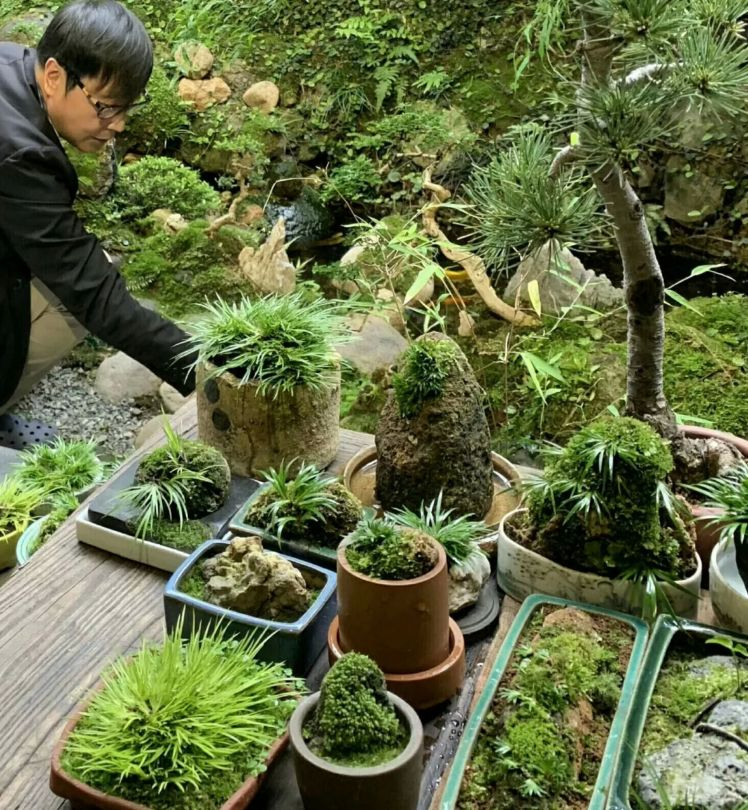
To care for any plant or flower, you must first be diligent, observe the weather changes, analyze and understand them from the subtle changes, and find the reasons for failure.
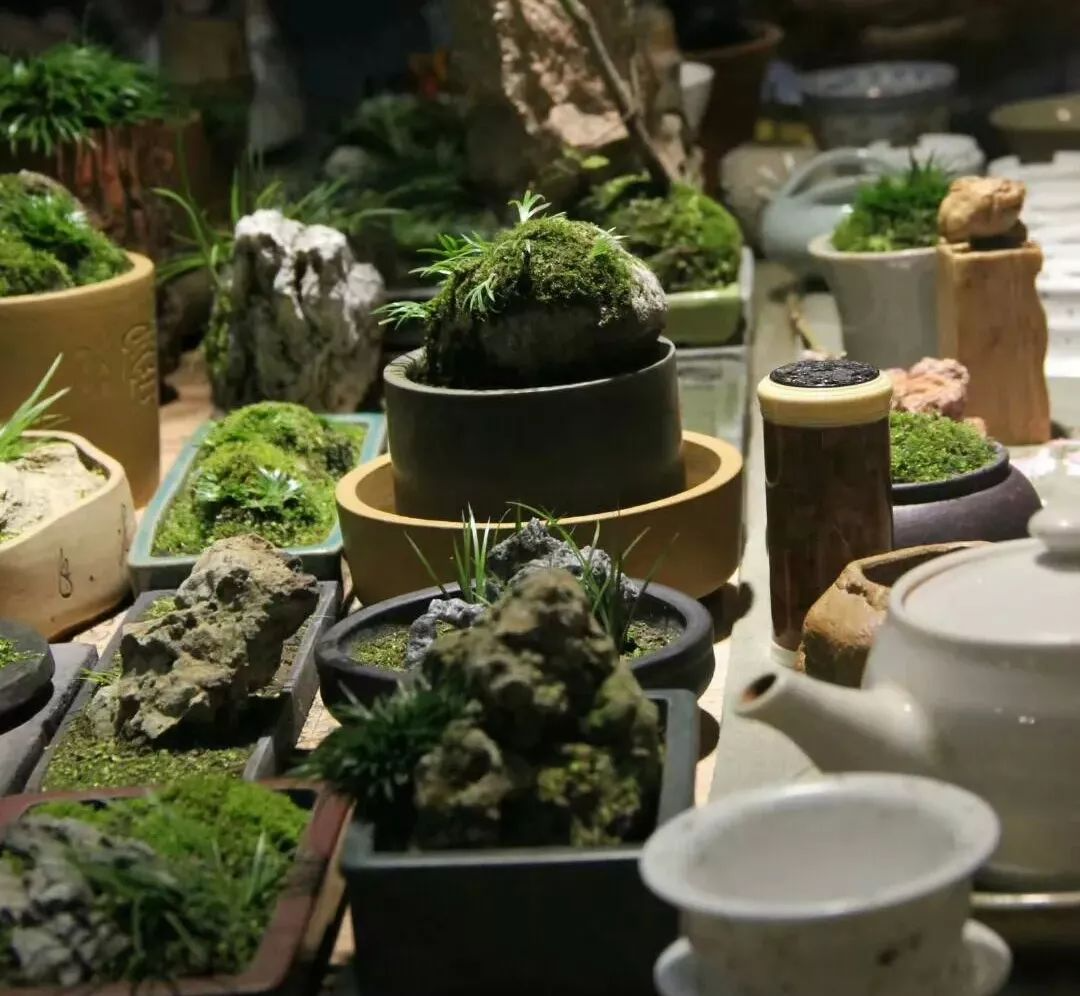
For example, moss grows best on rocks, preferring moisture to waterlogging and preferring sunlight under trees. The same is true for cattails. As the name suggests, all wild grasses come from the mountains, so when we transplant them, we must simulate natural conditions to the greatest extent possible, including humidity, light intensity, ventilation, etc.
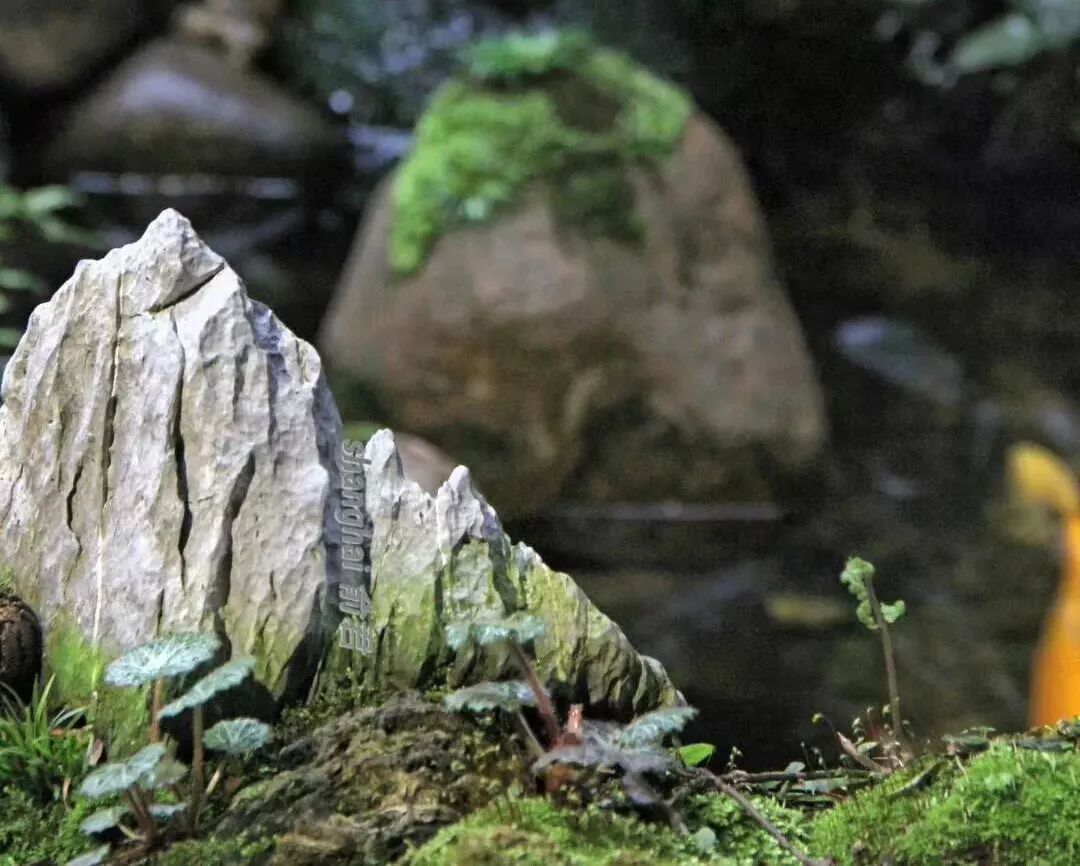
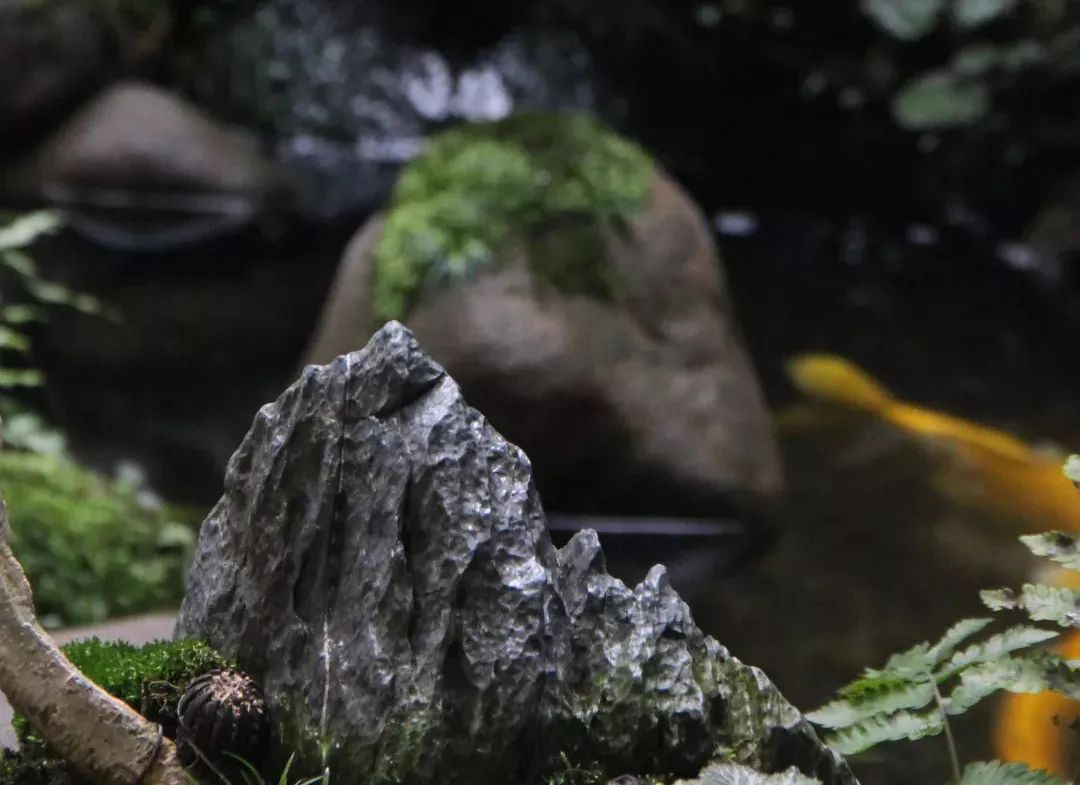
It is difficult for friends who are new to growing calamus to master its habits. I have some thoughts on this.
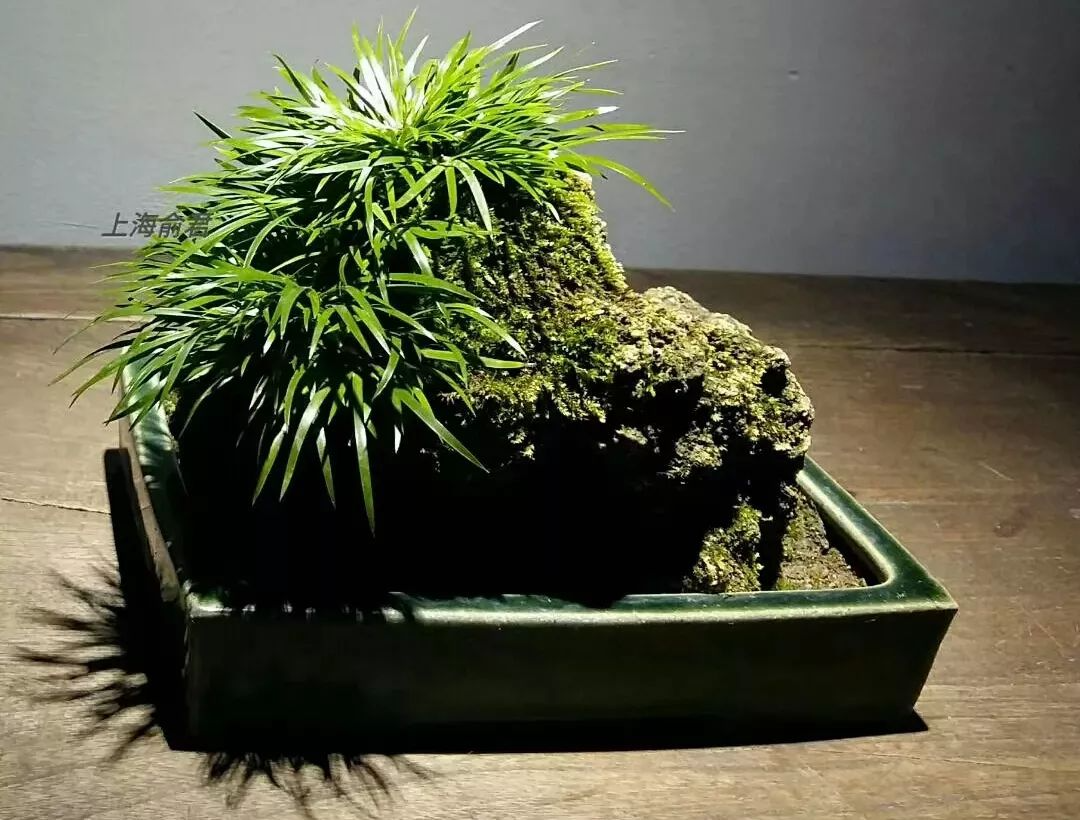
Water control is key for calamus. Don't wait until the plant is completely dry before rehydrating, as dehydrated leaves won't easily return to their original lush state. Also, avoid continuous rain for several days, especially when the temperature is above 25 degrees Celsius. Watering is generally not recommended when the relative humidity is high. Calamus can be exposed to sunlight under appropriate shade during the summer months. Yellow leaves must be removed promptly to prevent degeneration and rot.
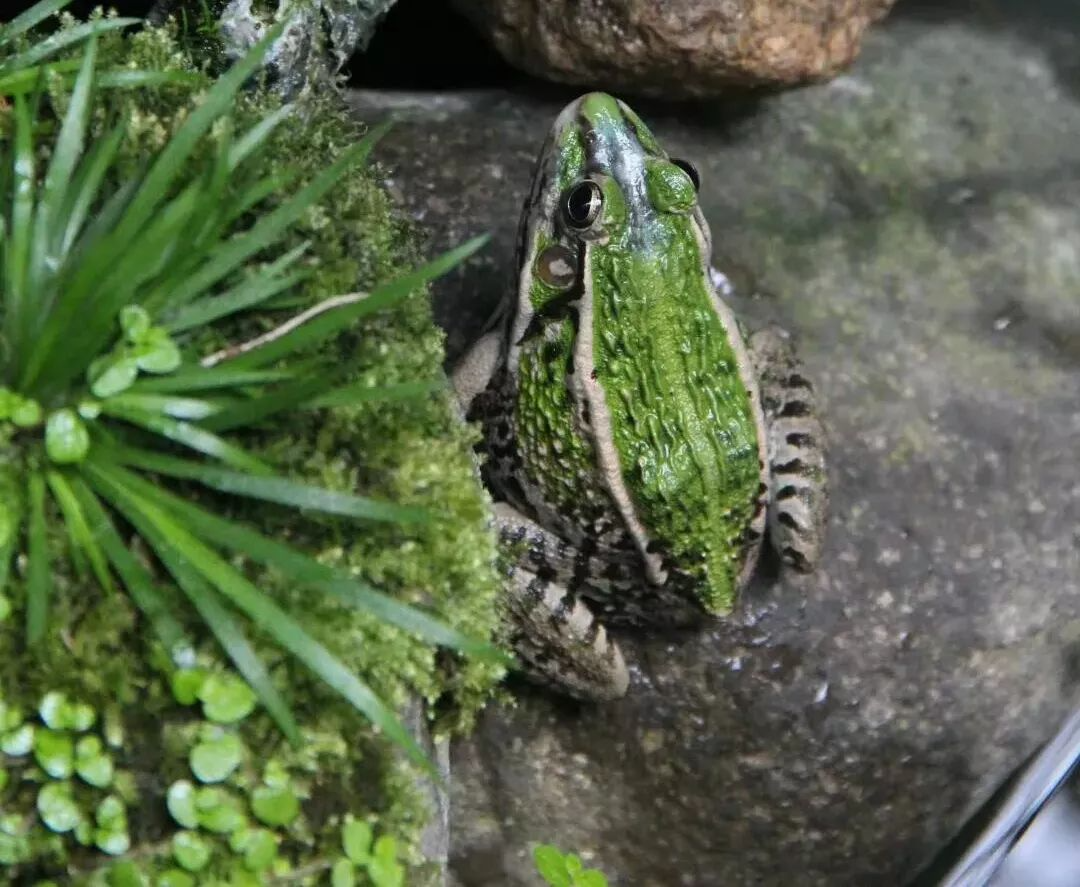
-
Every flower and weed has its value, and planting life will allow us to extend this concept to ourselves: everyone has his or her own value of existence.
As Jiayu says, planting is both a way to calm down and a way to heal. In the quiet and peaceful moments of time, whether you plant just a few plants or simply dream up a garden, through the practice of cultivating the company of plants and flowers, we will fall in love with more and more natural life, and we will find greater peace and composure.
Spring, summer, autumn, and winter—as the seasons change, we plant flowers, fruits, and vegetables in season, harvesting the fruits of spring and autumn. This is a slow process that requires immense patience, and with patience comes perseverance. It's so slow, so slow that even gardeners don't realize when they've finally overcome their own anxiety, confusion, and sadness.